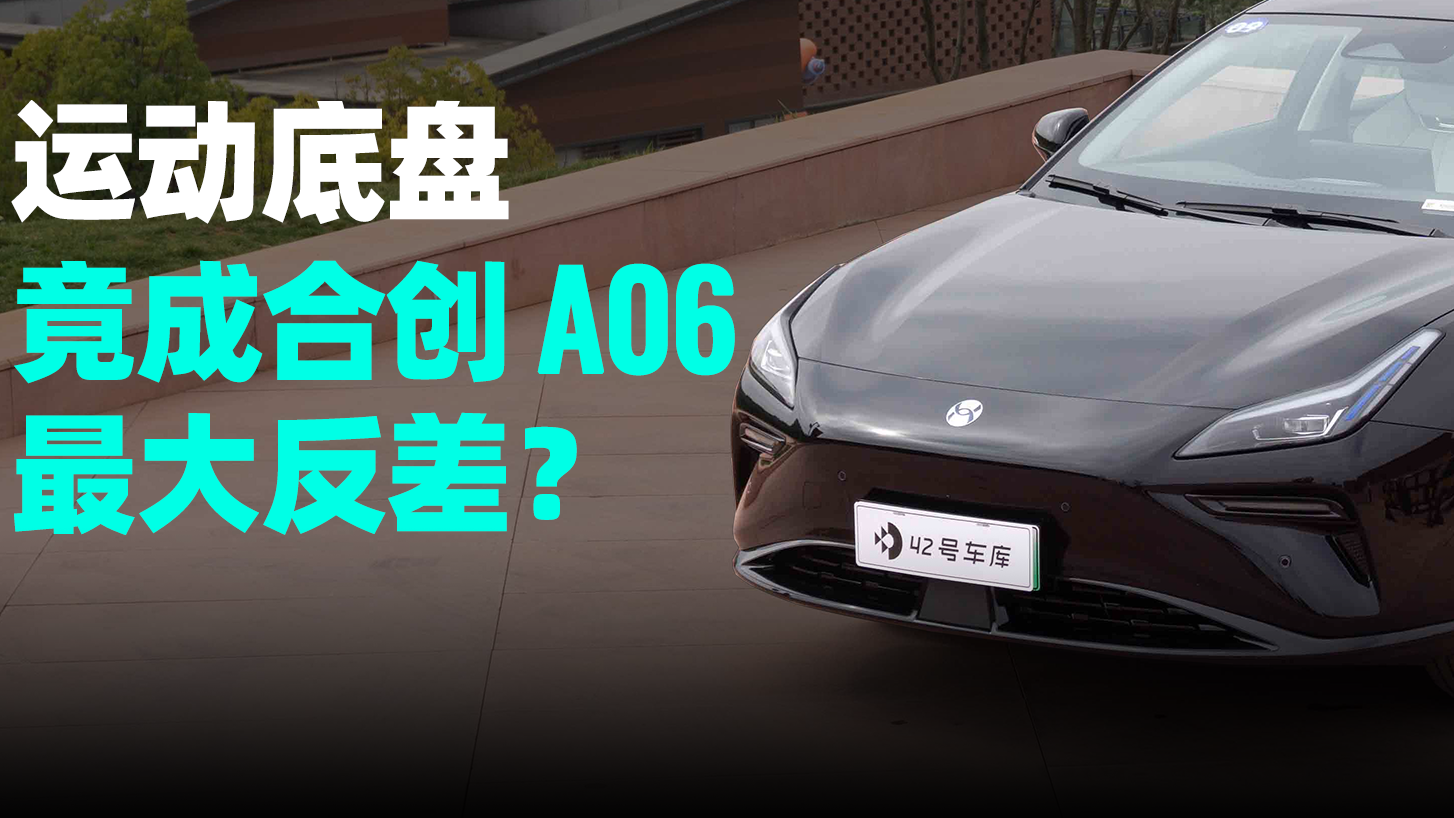In the past two years, China’s pure electric B-class car market has been particularly hot. Within the price range of RMB 200,000, domestic brands such as BYD Dolphin, Deep Blue SL03, and Leapmotor C01 are available, and Toyota’s latest bZ3 has also been priced within the RMB 200,000 range.
Facing such a fierce competition in the pure electric B-class car market, Hechuang has aimed its third product, the A06, at this level. In order to make the A06 more competitive, Hechuang has set its prices lower than several mainstream models. The entry level models of Dolphin, SL03, and C01 are around RMB 200,000, but their best-selling models are around RMB 230,000, while Hechuang A06 directly lowers the price of entry-level models to RMB 179,800, and the best-selling models to RMB 199,800.
This time, we came to Yunnan to test drive the most popular 630C version of Hechuang A06 in this high-altitude and mountainous region, to see how competitive it is in the RMB 200,000 pure electric B-class car market.
Appearance: Making Compromises for Aerodynamics
The appearance of Hechuang A06 gives a first impression of being relatively traditional, with no complicated lines, eye-catching lighting effects, or the mech-inspired design language with sporty feel like the one on the Z03. Instead, it has used a lot of flexible lines in the enclosed front face, as well as a bow-shaped body. In other words, this appearance may be a bit mediocre.
However, behind the appearance, Hechuang A06 has an aerodynamic coefficient of only 0.217. Compared with Deep Blue SL03’s 0.23, BYD Dolphin’s 0.219, and Leapmotor C01’s 0.226, this is a very excellent aerodynamic performance at the same level. For pure electric cars, low air resistance means better energy consumption performance.
To achieve a better drag coefficient, the length of Hechuang A06 has been extended to 4,965 mm, especially with the longer front end, which directly results in the longer front overhang of the Hechuang A06. Therefore, from a side view, the Hechuang A06 is not designed as the commonly seen four-wheel and four-corner pure electric car.
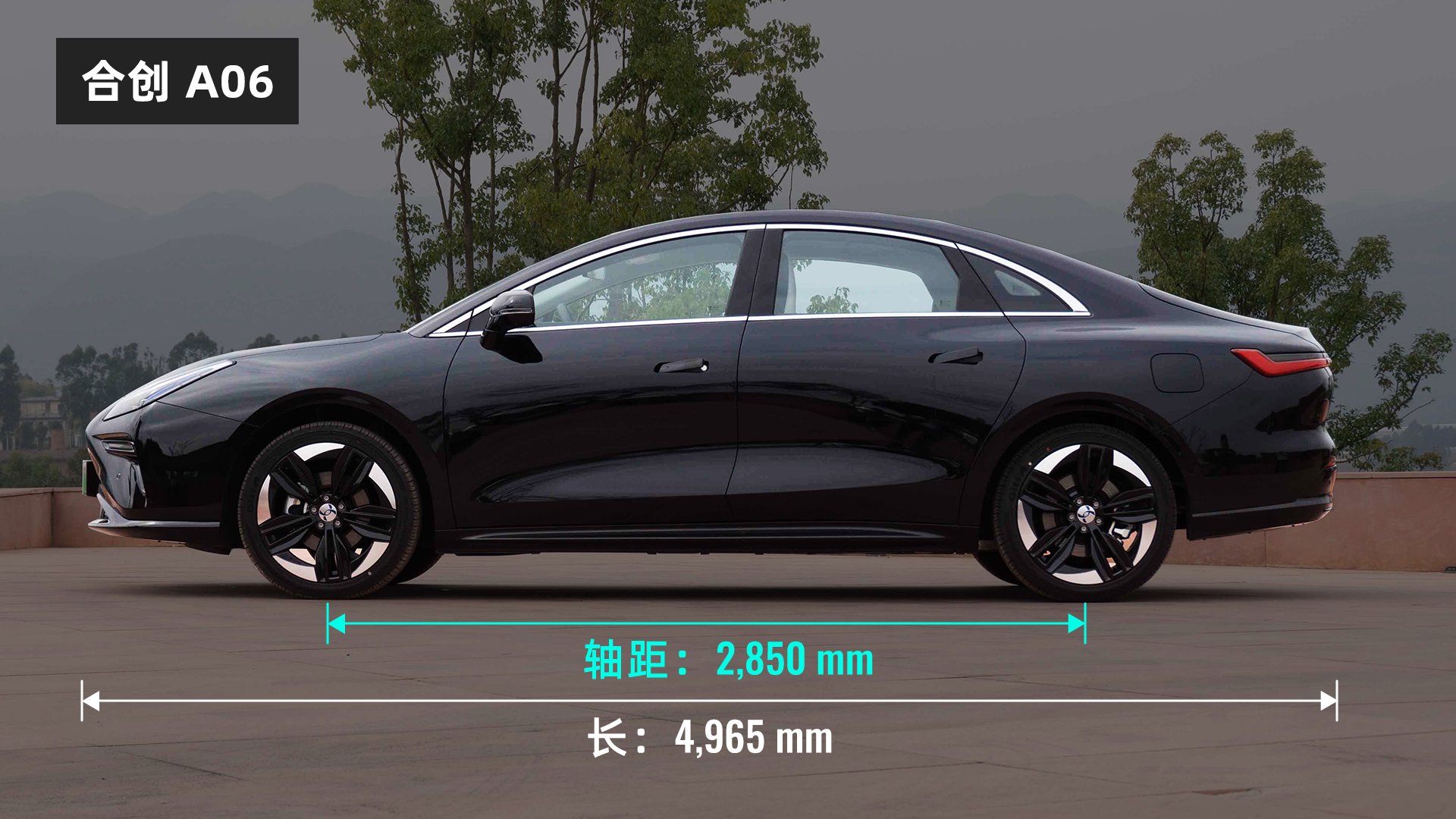
Besides its appearance, this also causes a slightly lower “room rate” when compared with the same level of vehicle models, as can be confirmed by the longer wheelbase of the Hechuang A06. Of course, the length of the wheelbase does not fully represent the size of the seating space, so we will discuss the spatial performance later.
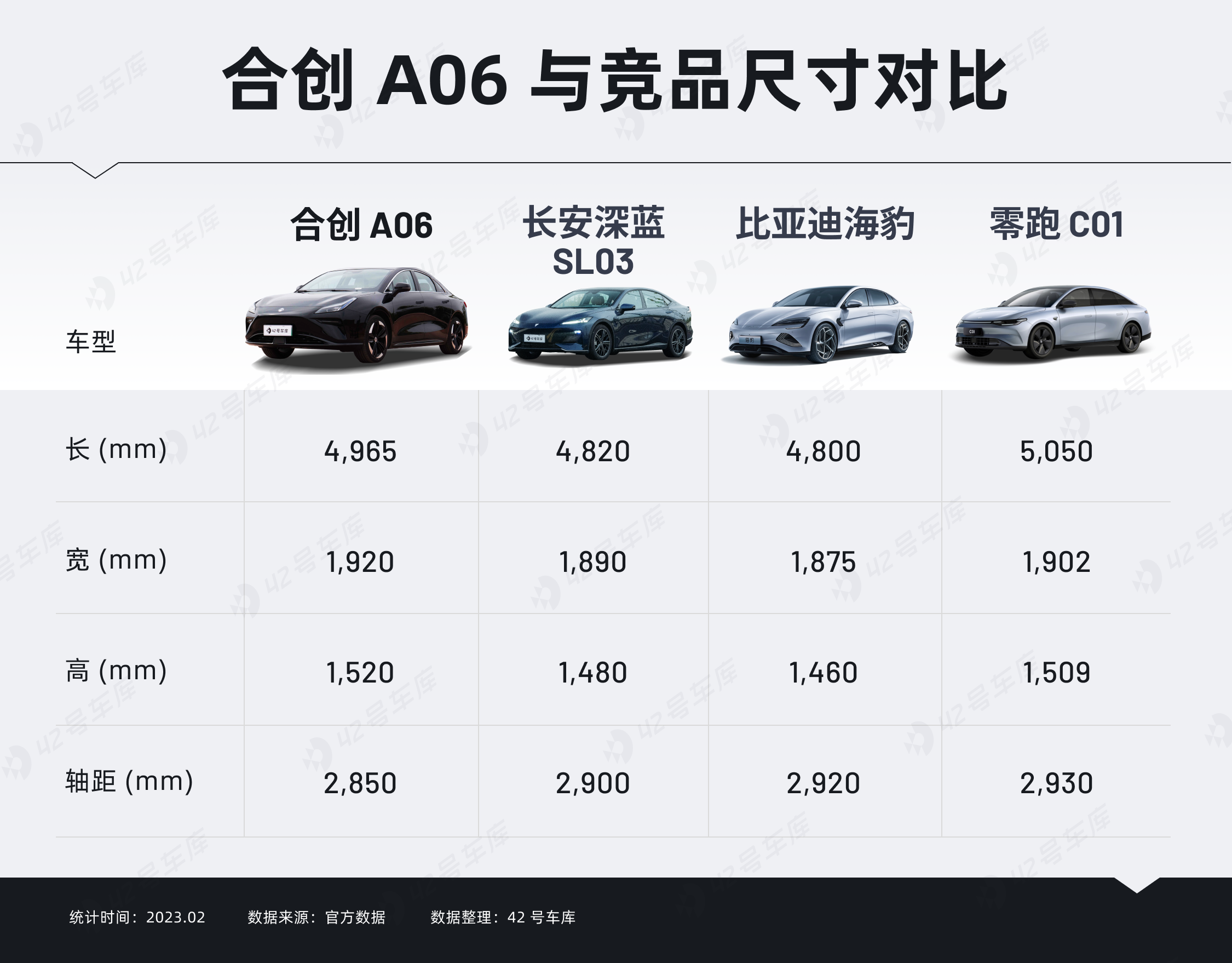
Since it has the longest front overhang in its class, I began to expect that the Hechuang A06 might have a front trunk under its “long nose.”

After opening the front compartment, the motor and high-voltage system are arranged inside, and the front compartment is not fully filled. There is a palm-sized gap left between the radiator and the high-voltage system, and the space utilization rate is not high. According to the Hechuang three electric engineers, there is a possibility of installing a heat pump air conditioner for this model in the future.
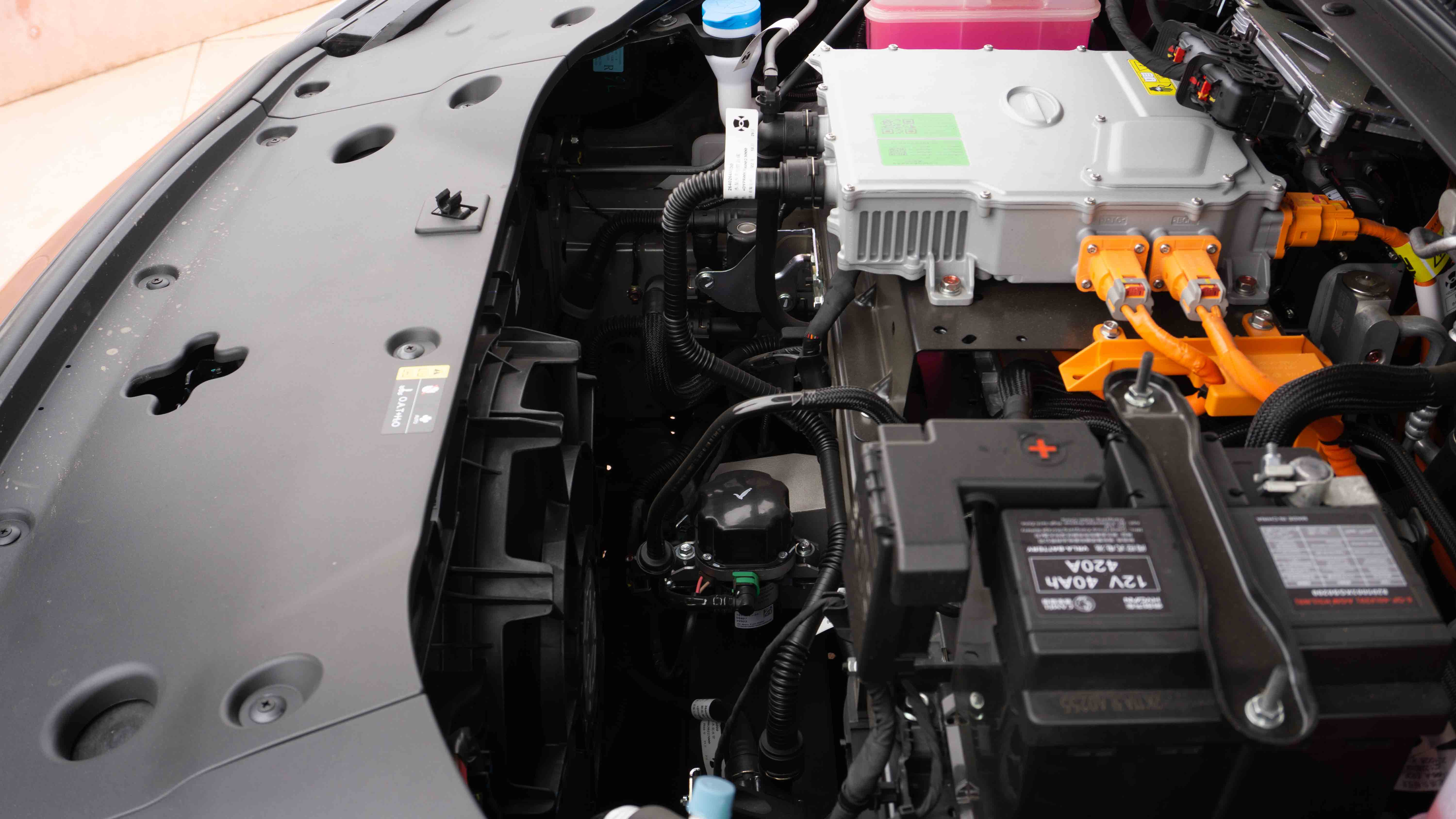
The style of the rear end of the Hechuang A06 is consistent with that of the front end, both of which have very round shapes. The rear end is integrated into a continuous light strip design. In the era where the continuous light strip has become the mainstream design language, the Hechuang A06 adopts a small hook design on both sides of the tail lights to increase its distinguishability. Moreover, the 1,920 mm width of the car brings a sense of a small wide-body to the tail of the vehicle, which is visually appealing.
 The trunk opening button of HEC A06 is located above the bottom license plate frame. To open the trunk from the outside, you need to bend down slightly. After opening, the tailgate will not pop up automatically. You need to reach into the gap and pull it open, which is a bit inconvenient. In this level of car models, most of them are equipped with electric tailgates, and HEC is also considering adding them in the later revised models. There is a question about whether the structure of the hydraulic support rod needs to be redesigned.
The trunk opening button of HEC A06 is located above the bottom license plate frame. To open the trunk from the outside, you need to bend down slightly. After opening, the tailgate will not pop up automatically. You need to reach into the gap and pull it open, which is a bit inconvenient. In this level of car models, most of them are equipped with electric tailgates, and HEC is also considering adding them in the later revised models. There is a question about whether the structure of the hydraulic support rod needs to be redesigned.
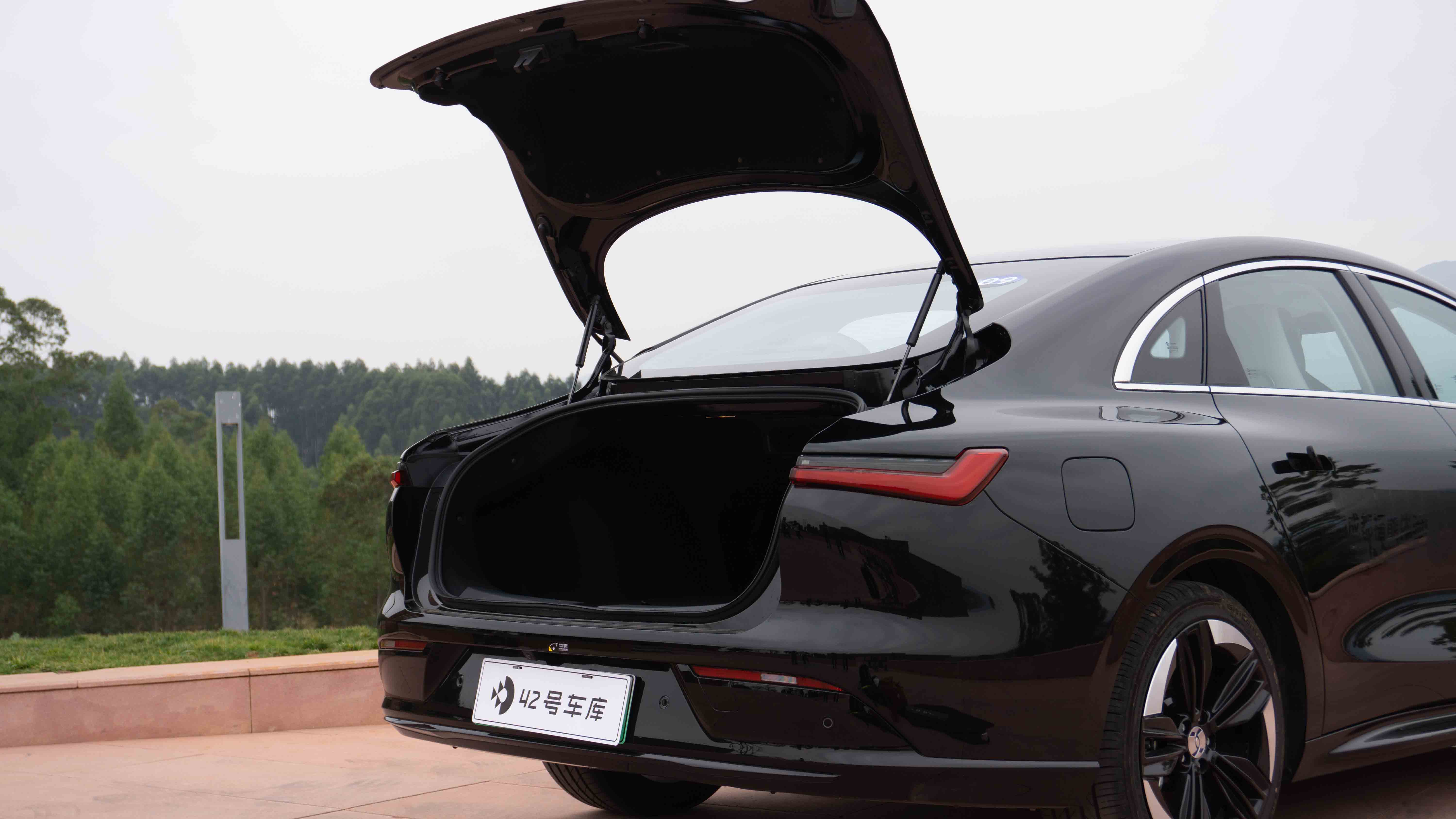
After actual measurement, the trunk space of HEC A06 is 119 cm deep, 106 cm wide at the opening, and 45 cm high, which is in line with the tail space of a standard B-class car. It is adequate for daily travel and transportation of items. The rear seat cushion also supports 4/6 folding, and like most three-box cars, there is a higher platform protrusion.
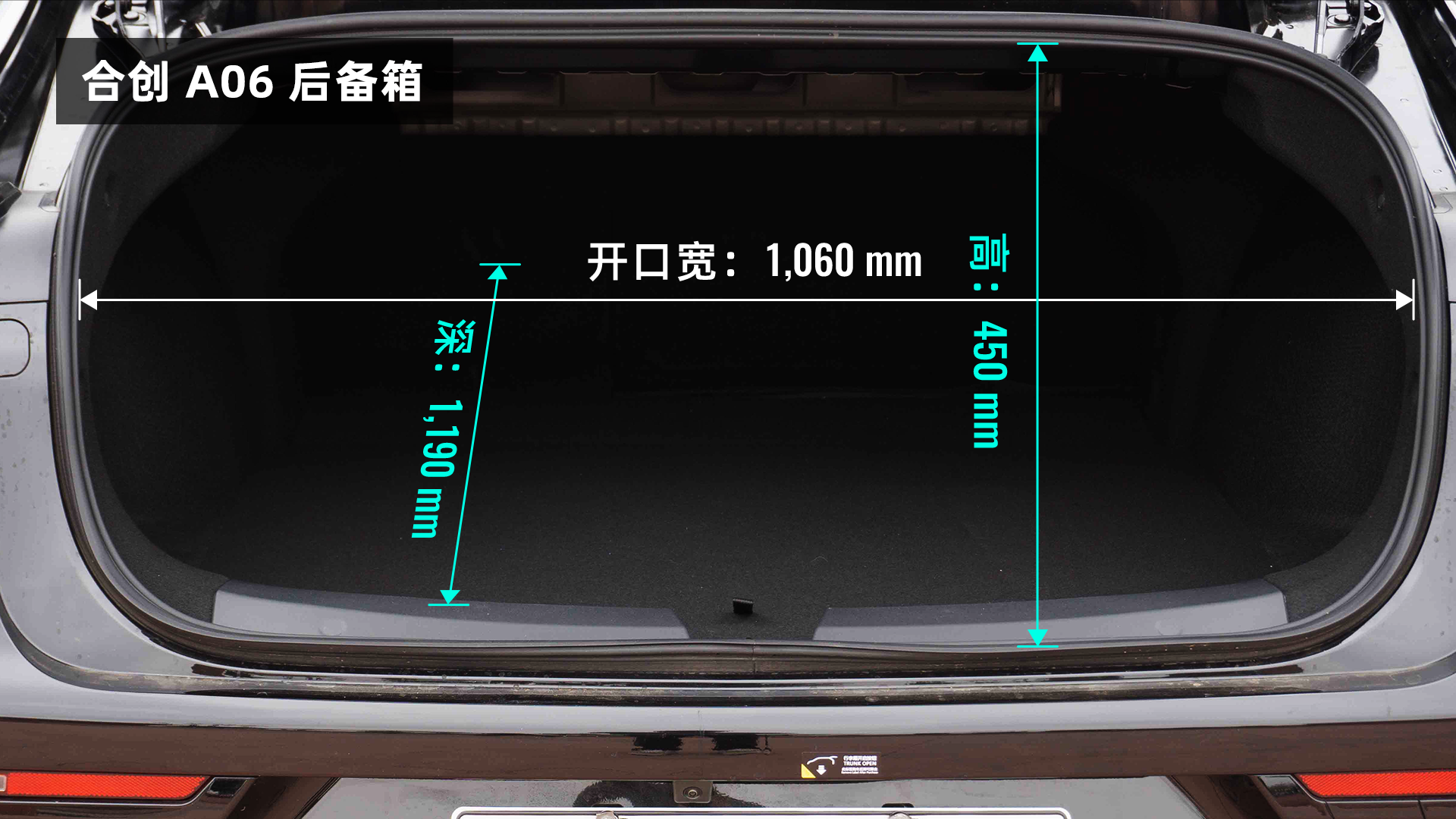

From a design perspective, HEC A06 does not give a dazzling feeling in appearance. The slightly long front and rear overhangs also lack the ultimate posture and proportion of a sports sedan. However, from a practical perspective, A06 uses a lot of smooth lines to exchange for an excellent drag coefficient, which is worthy of recognition.
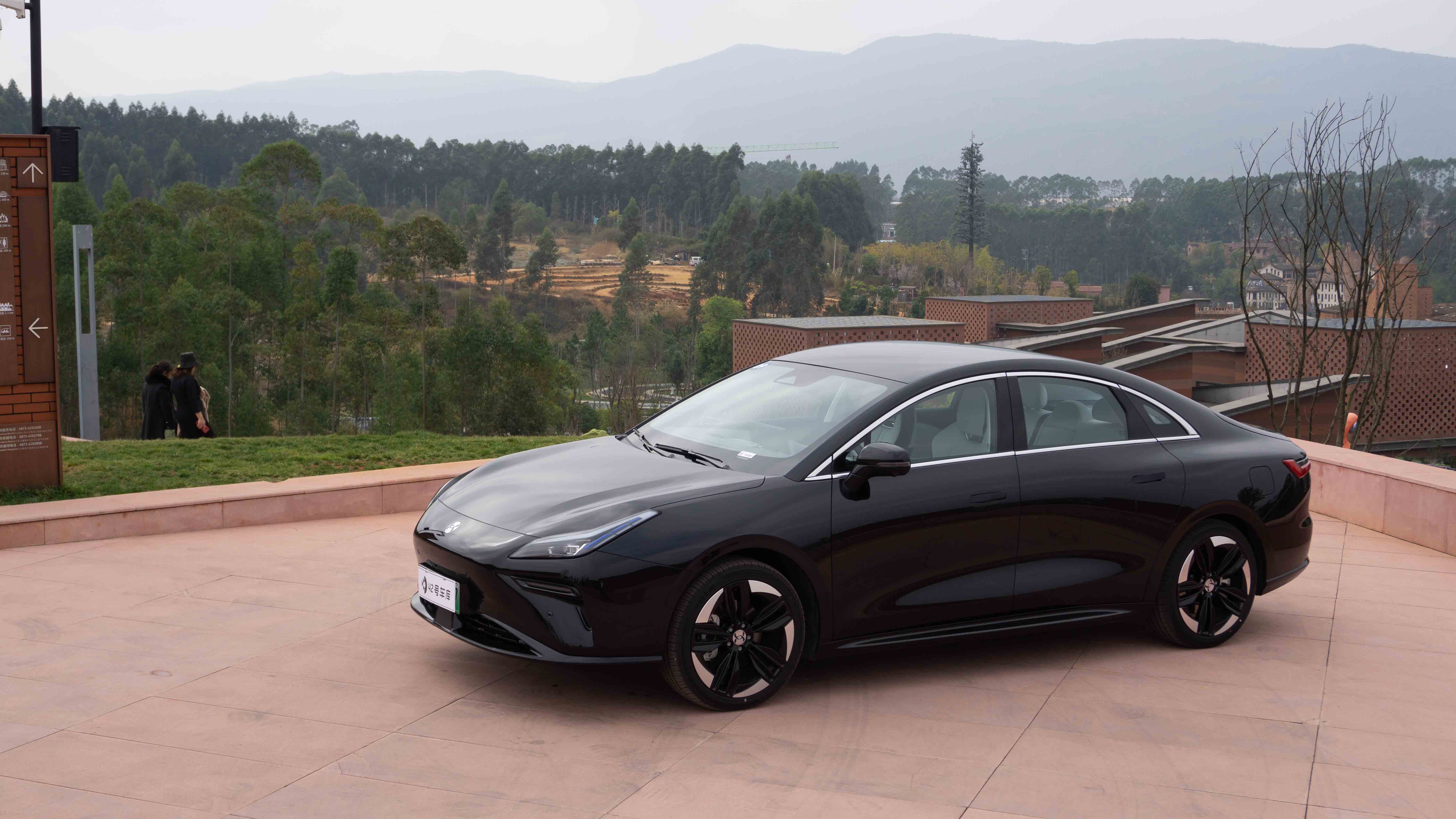
From a brand perspective, the three models of HEC currently lack some iconic design language of the brand. But this is not a bad thing, as each car achieves its own design aesthetic, which is better than copying the family design. The expectation is that HEC’s subsequent products can find a design language that suits the brand.
Interior: Innovative Details
The family design language that was missing in the appearance of HEC A06 was retrieved in the interior. The overall functional area is consistent with Z03. However, the wrap-around center console makes HEC A06 more luxurious and layered.
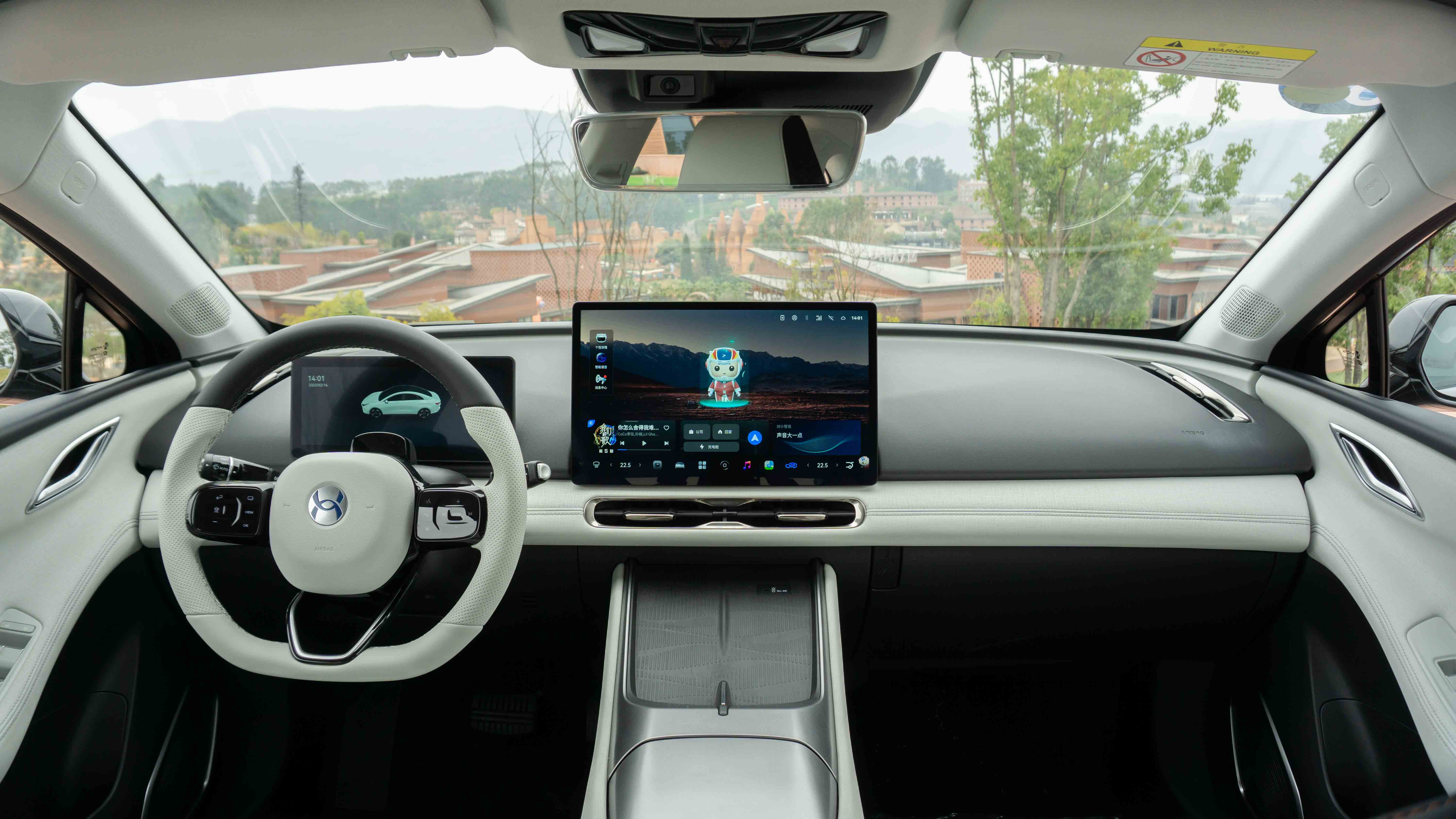
The enclosed central control panel was a very common design in B-class cars in the past. With the application of minimalist design in recent years, this design has become less and less common. However, in the Hozon A06, the fusion of the enclosed central control panel and simple design is still quite good.
The Hozon A06 has two interior color options, interstellar black and dawn white. The vehicle we took pictures of is dawn white. The actual feeling is the combination of black and white, and the enhanced seat series uses orange stitching, which is very consistent with the aesthetic of young people and will be the preferred color for young consumers. However, white leather needs more meticulous care in the later period.
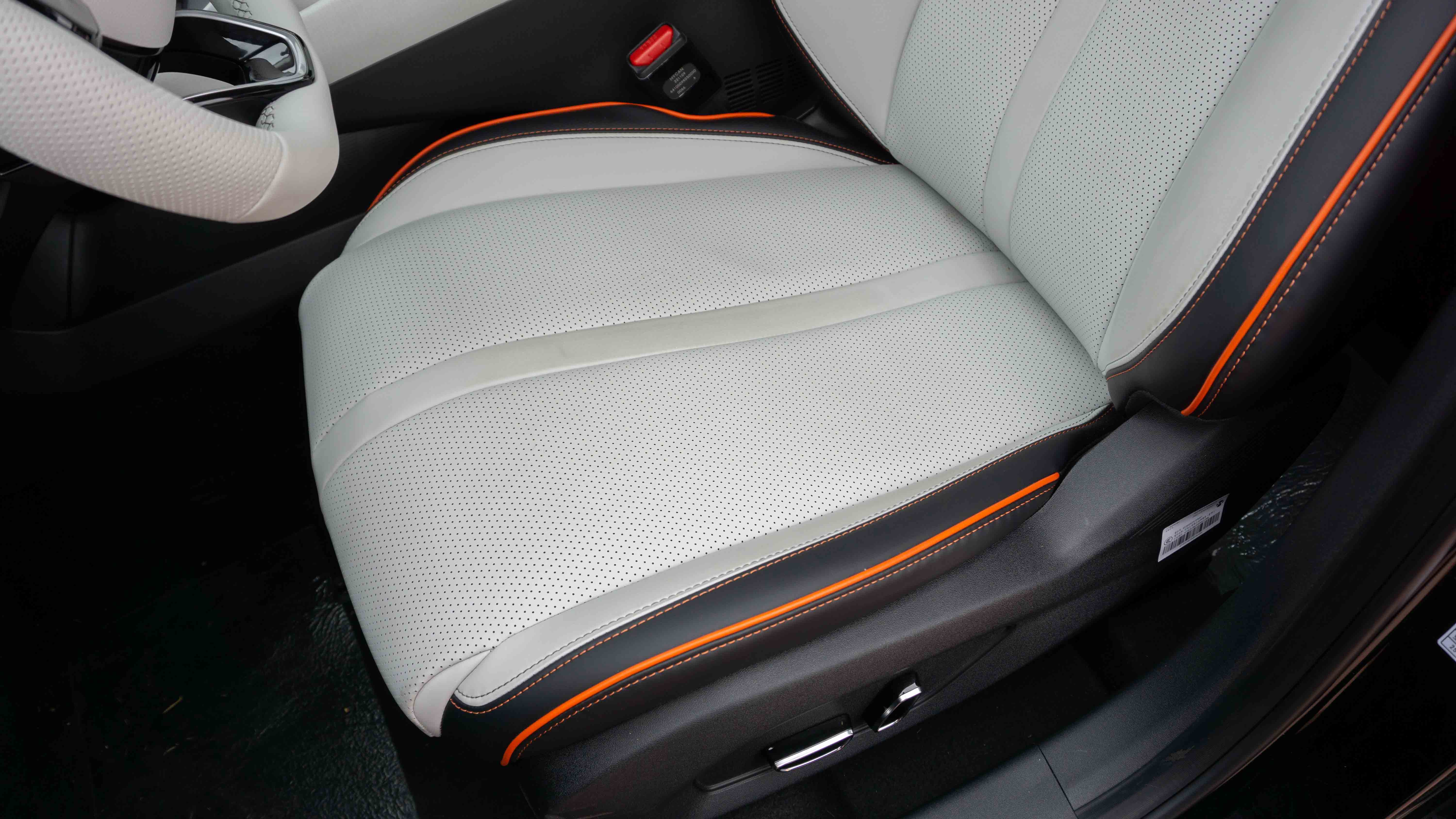
The white leather interior is not pure white, but is decorated with very fine lines. Although it is PU leather, the texture created is still quite thoughtful.

The steering wheel also uses black and white stitching. The lower part is made of perforated leather, and with moderate grip, the overall feel is good. The only problem is that the angle adjustment has only two options, up and down. Although I did not find a problem with driving myself, if it could be adjusted front and back, it could meet the needs of more drivers of different heights.
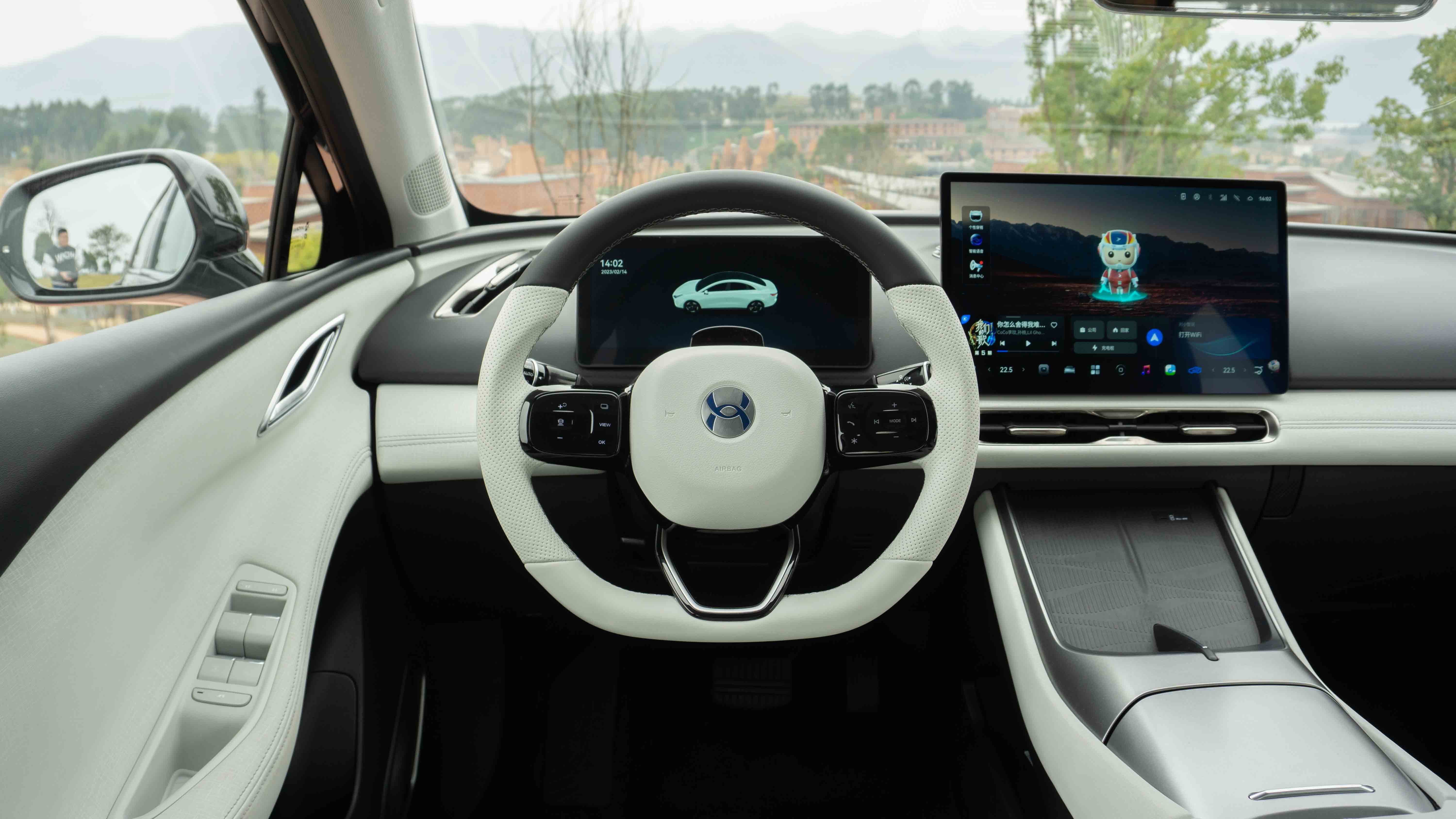
The cabin is equipped with a 10.25-inch LCD instrument panel and a 14.6-inch central control screen. The central control screen uses a Qualcomm Snapdragon 8155 chip, and there are no problems with the smoothness of use. This time, HI-OS on the Hozon A06 has made some changes under H-VIP 2.0. The 1.0 cabin on the previous Z03 had a high similarity to GAC Aion. This time, there have been major improvements on the A06.
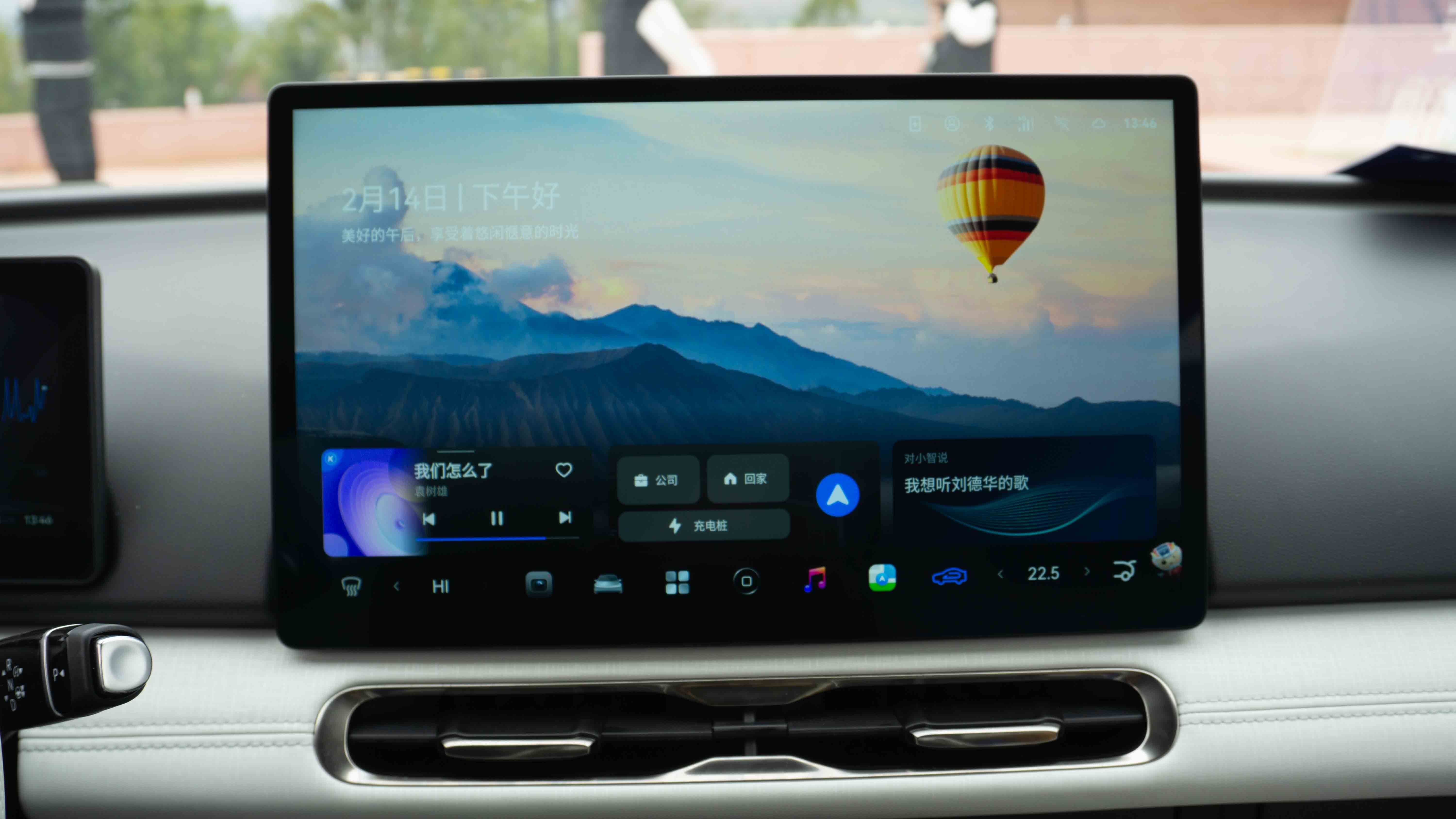
The design logic of the homepage and AITO on-board system of HongMeng OS are quite similar. The main body is a large-scale wallpaper layout, with the status bar at the top and the card quick control and Dock bar at the bottom. A good feature is that swiping to the right on the wallpaper can switch to the map state, and even during navigation, the navigation status can be displayed. Clicking again opens the navigation app to control the map, with map data provided by AMap.
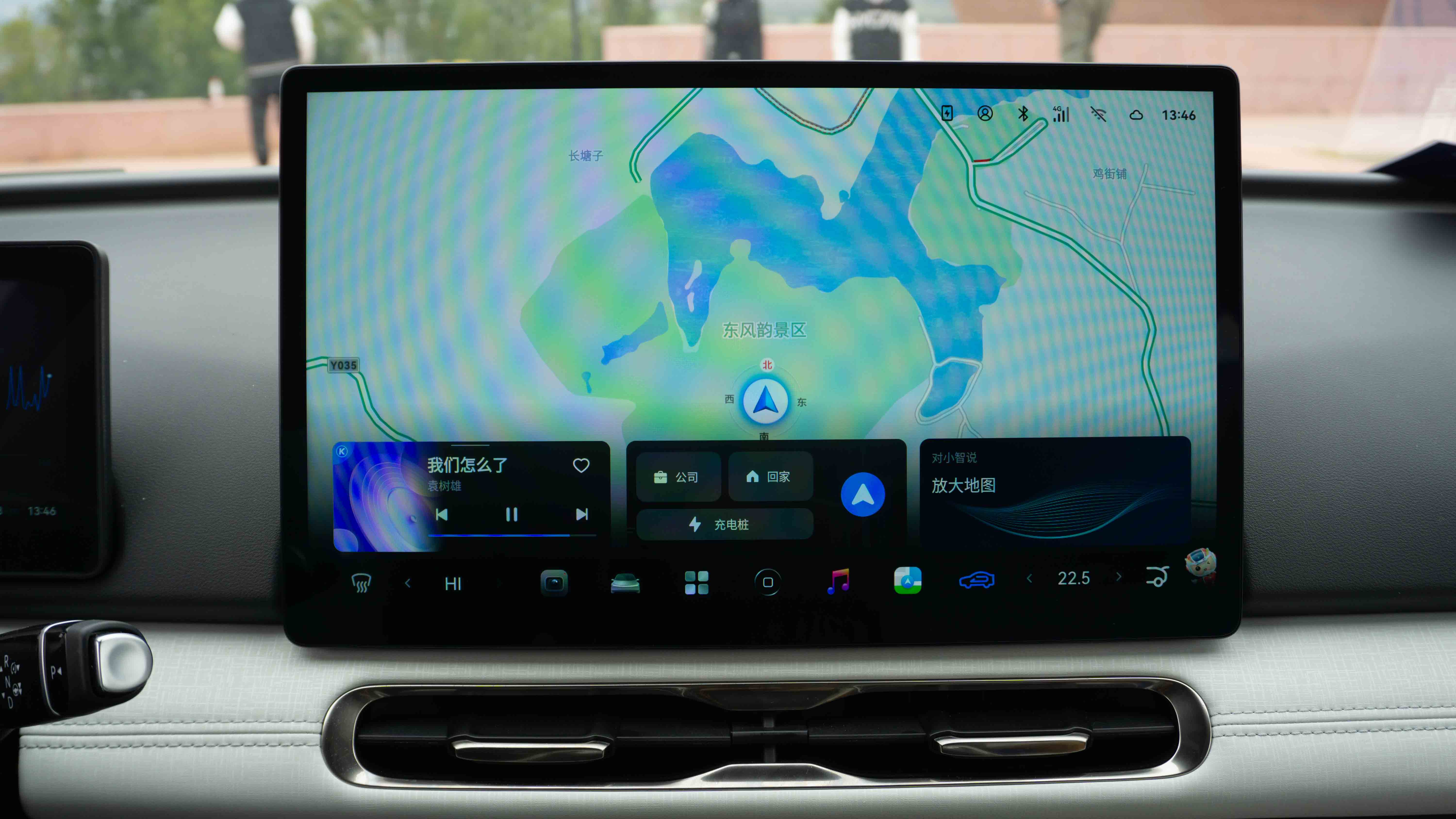
However, the interface is currently not perfect, and the native application icons in the Dock bar are not uniform, with flat design and skeuomorphic design mixed together, which is worth revising in future OTA updates. Although it does not affect the use, a more beautiful car machine and a more unified style can bring a better user experience.
The dual air vents at the bottom of the screen are in the traditional location, but the layout of the air vents on the left and right sides of the driver and co-driver is worth mentioning. From the style of the air vents, these two angles cannot directly blow onto people. They can only adjust the blowing angle to blow towards the glass.

In the product introduction section, HeChuang calls this design a waterfall-like air curtain without any sensation. As the top of the HeChuang A06 is an integrated Low-E panoramic sunroof without a sunshade, to solve the problem of exposure to the sun in summer, HeChuang uses the principle of downward cold air to blow cold air upwards, which slowly falls along the sunroof to achieve rapid cooling. However, the temperature on the day of the test drive was around 17°C, so we did not experience the specific effect of this design.
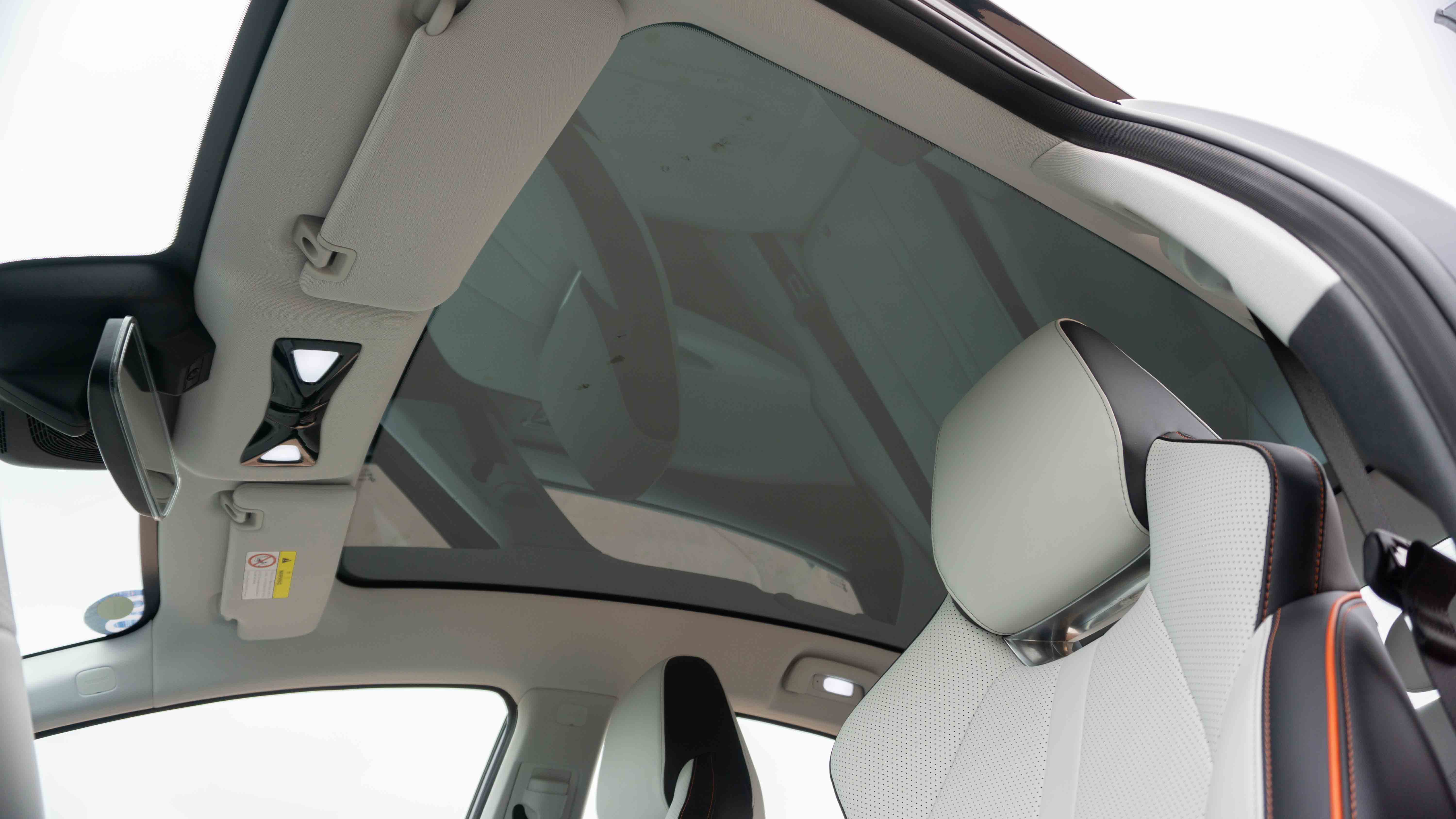
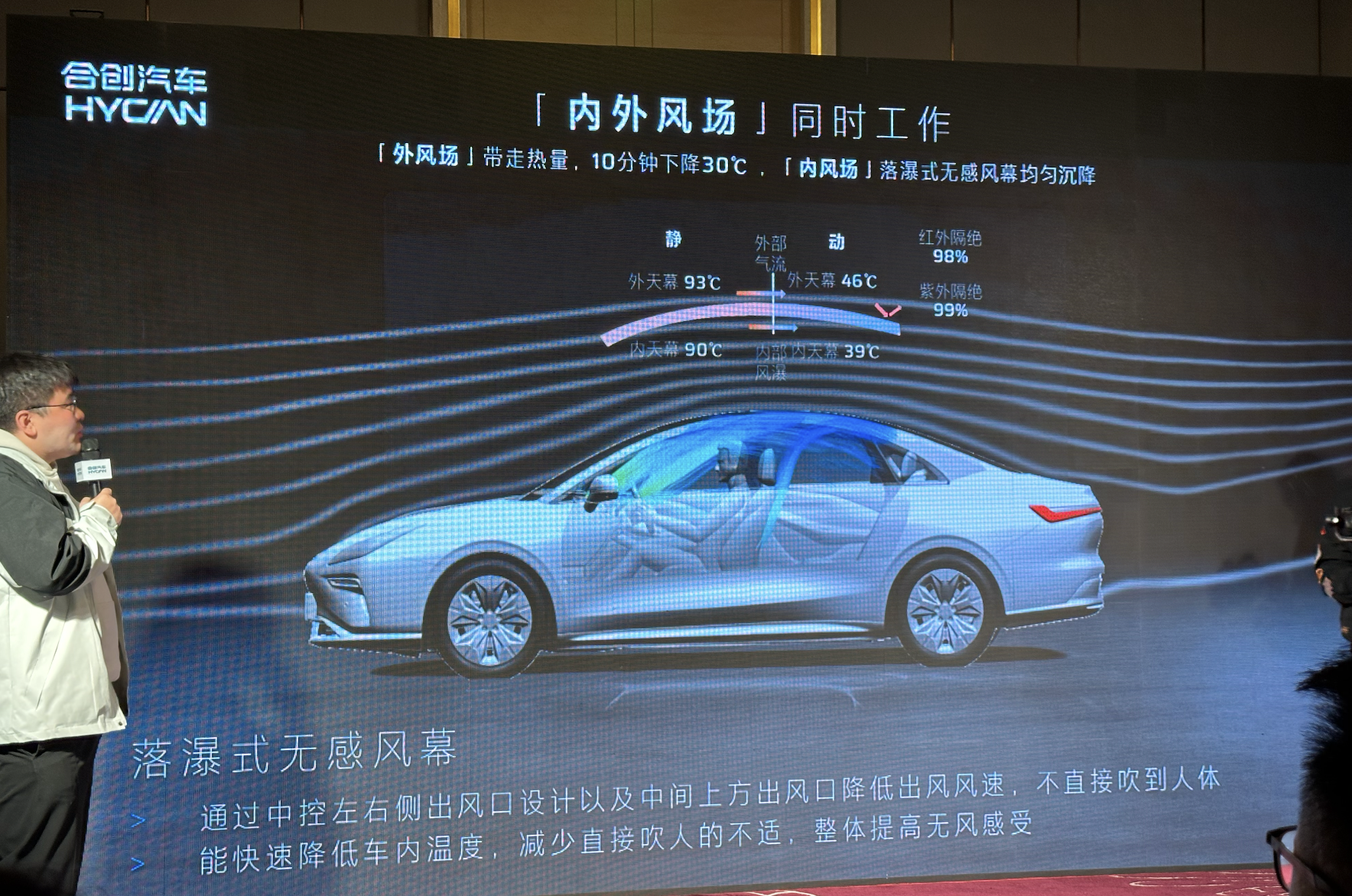
There are two phone placement positions in the center console of the HeChuang A06, but only the left position supports wireless charging for phones, while the top of the right position has a 60W fast charging interface for phones. The top position is also rational, and placing an iPhone 14 Pro Max on it will not block the charging port.

The lower cover has two cup holders and a USC interface and a 12V, 120W car power port at the back. As a result, when it comes to the front row, there are many charging positions, which can power four devices at the same time.
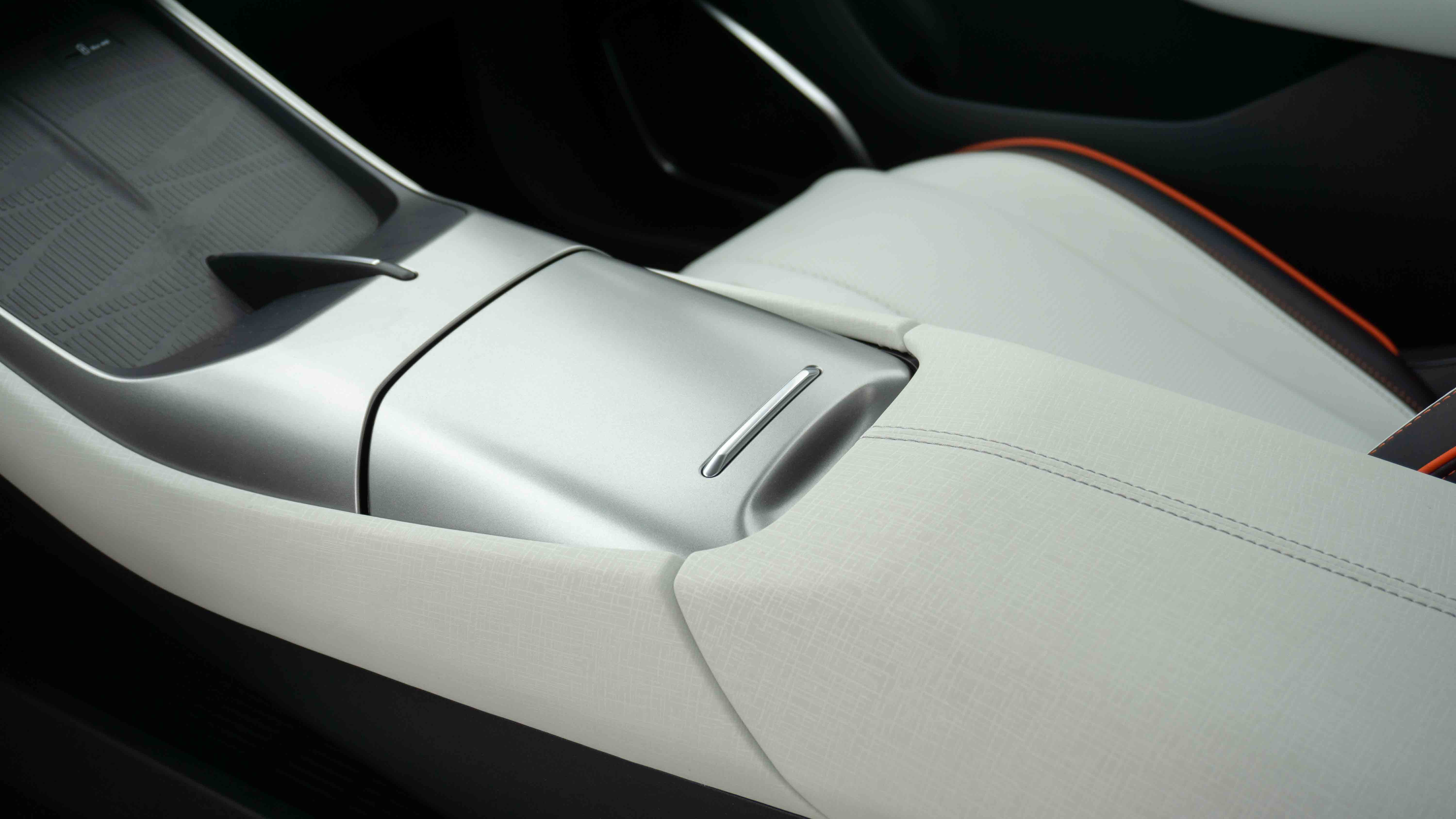
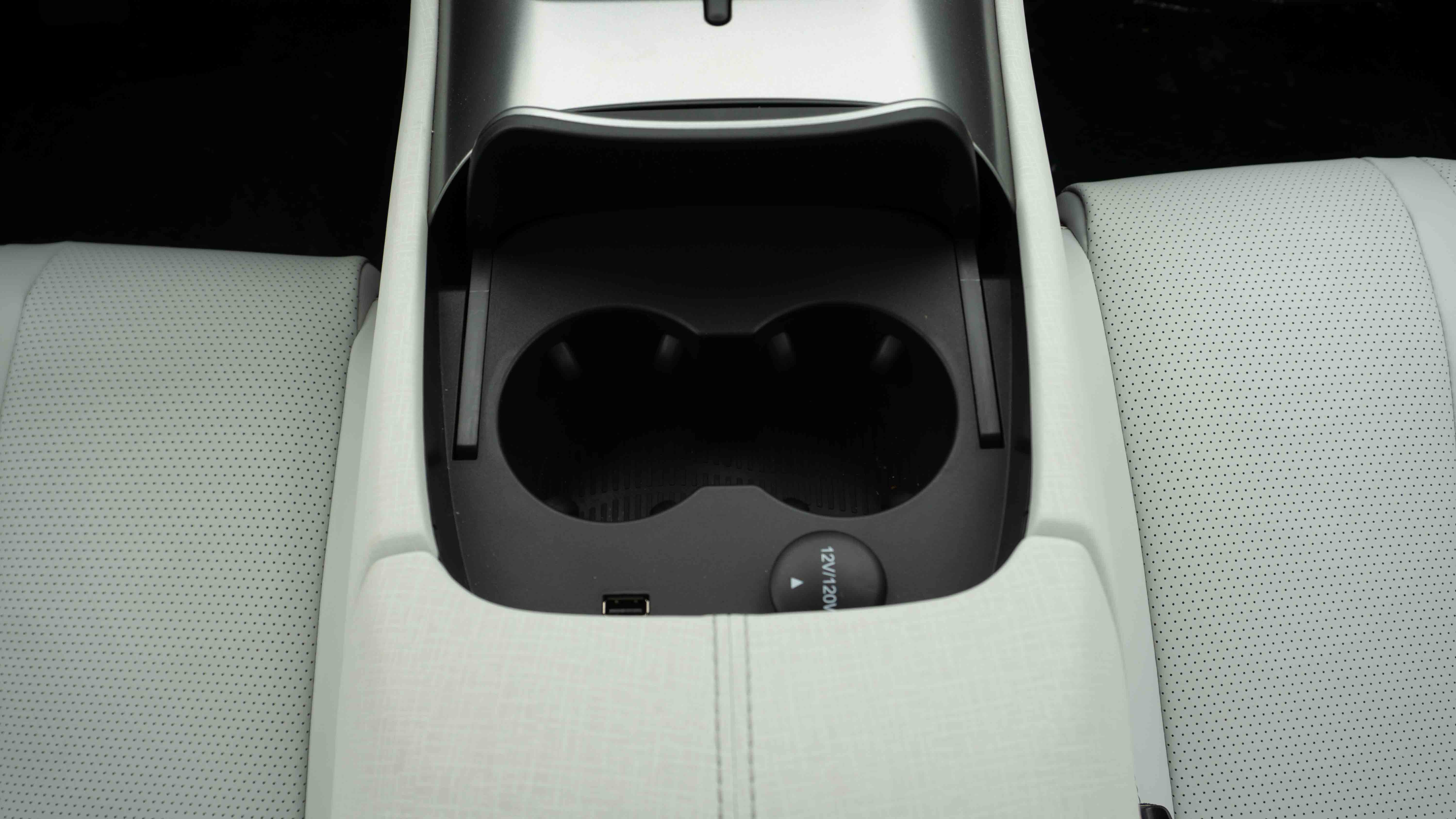
There is also a small surprise inside the armrest box of the Hozon A06. A small opening is introduced into the air conditioning pipeline to the armrest box. Therefore, whether in summer or winter, this small detail can provide suitable insulation for your cold and hot drinks. However, the capacity of this armrest box is not large, and it can only hold vertical 250ml and 330ml cans. It cannot accommodate 500ml bottled water.
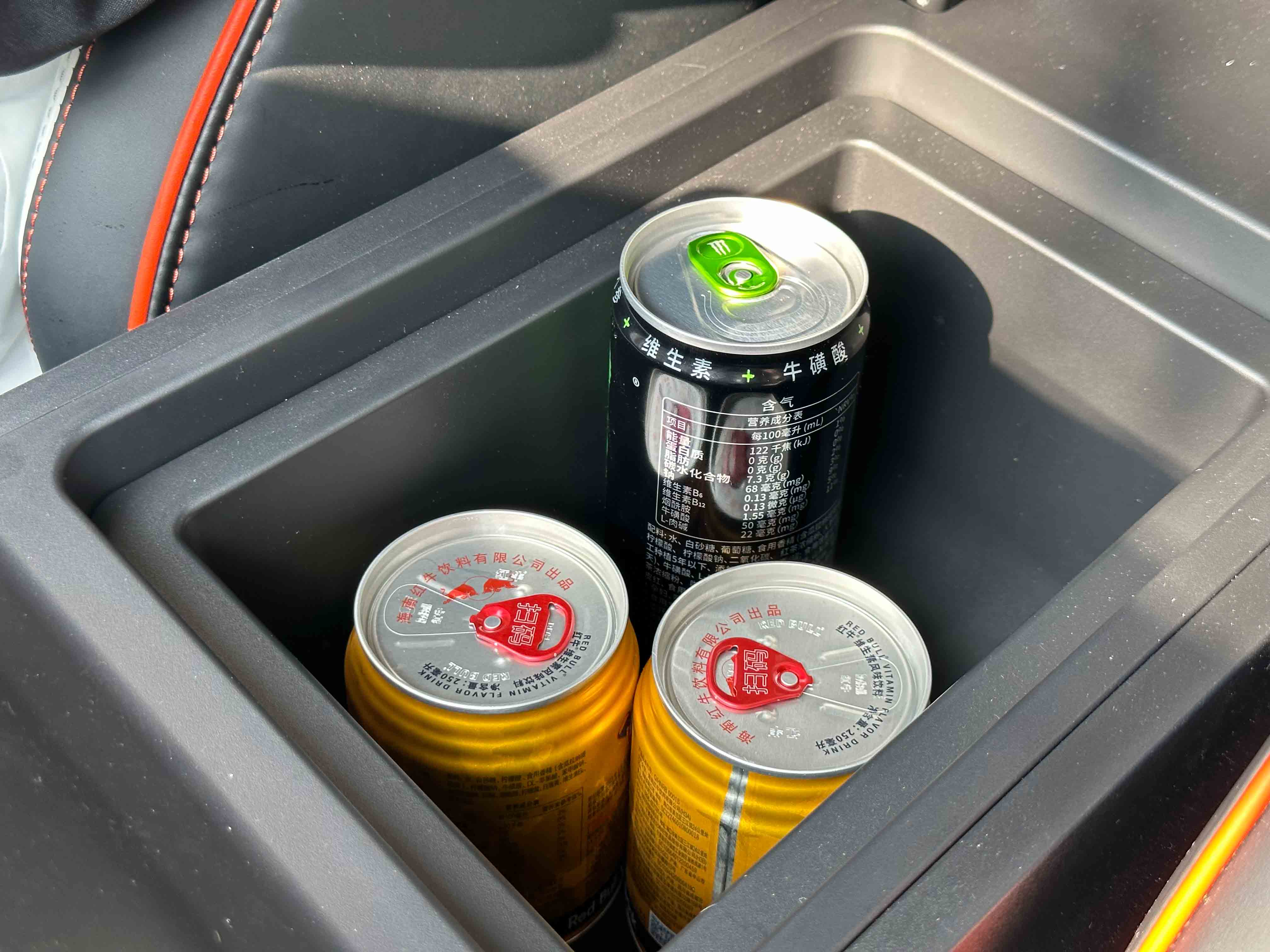
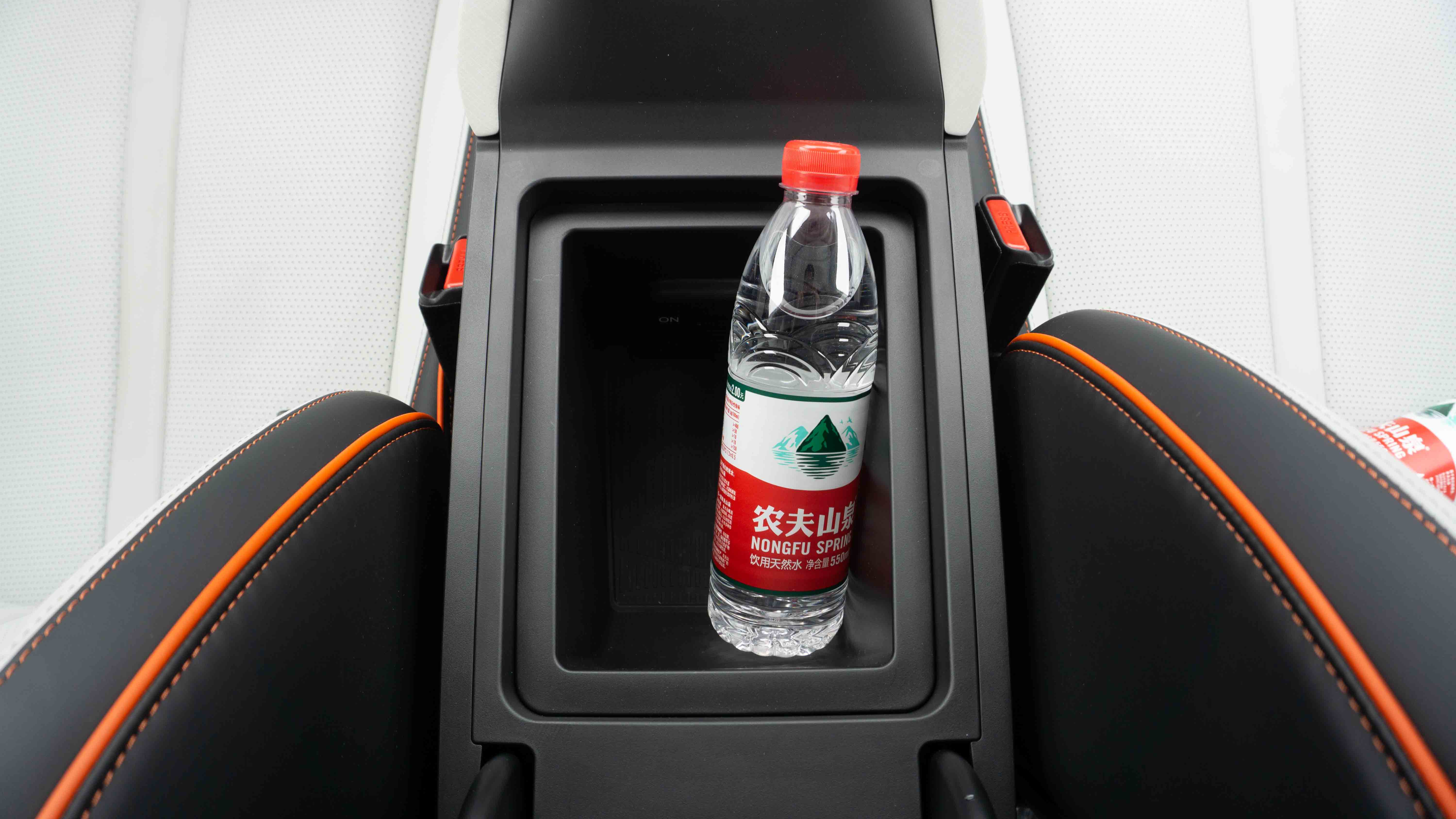
Below the entire central control panel is a hollow storage space with an anti-slip texture on the bottom. Although large items cannot be placed, a camera, a 10/13 inch tablet, and an A4 paper folder can be easily stored.
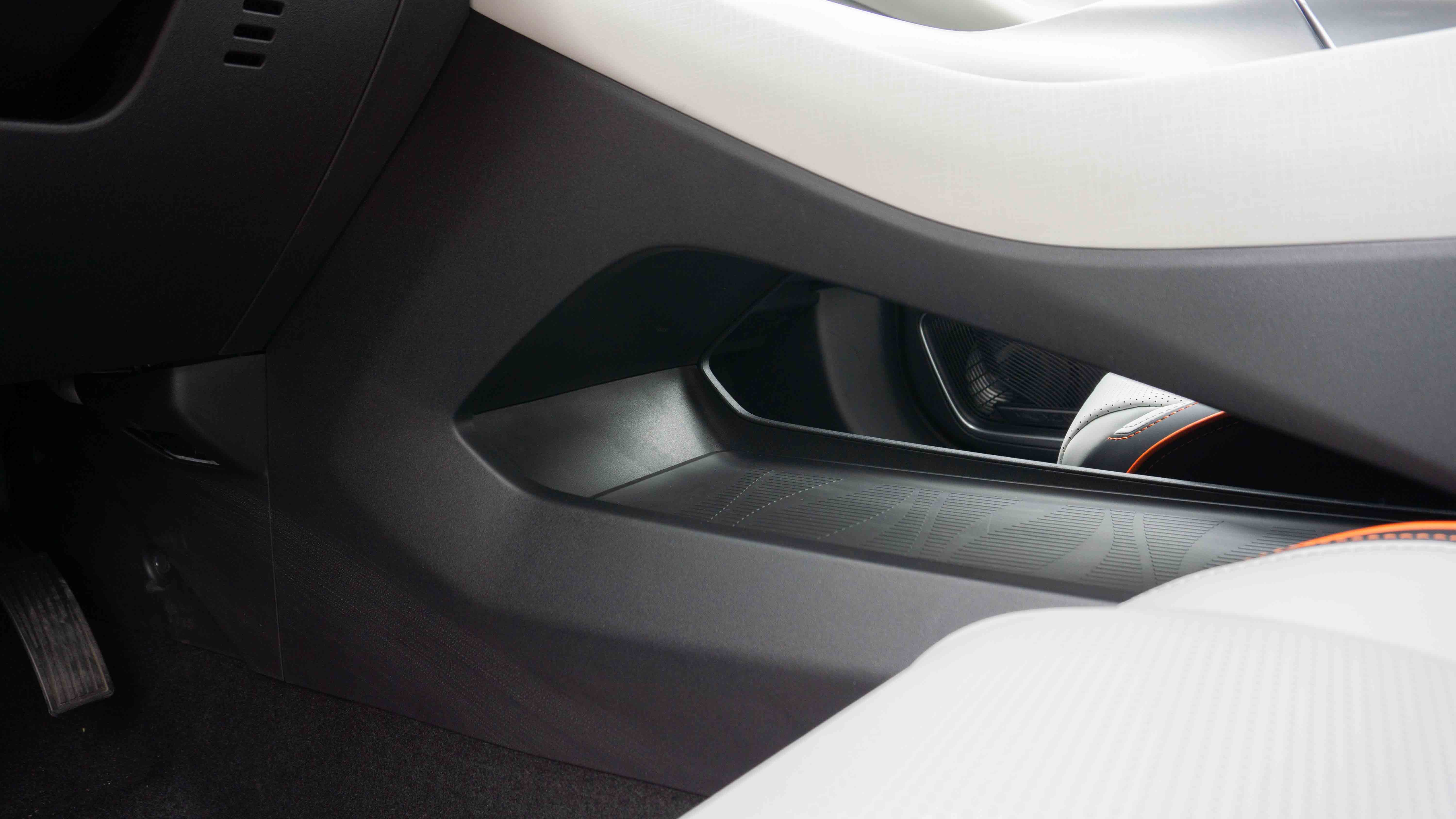
In addition, the glove box of the Hozon A06 is treated with velvet processing. In addition to the good visual effect, small objects can also be placed inside without making noise due to vehicle bumps. The space can accommodate three 550ml bottles of mineral water at the same time.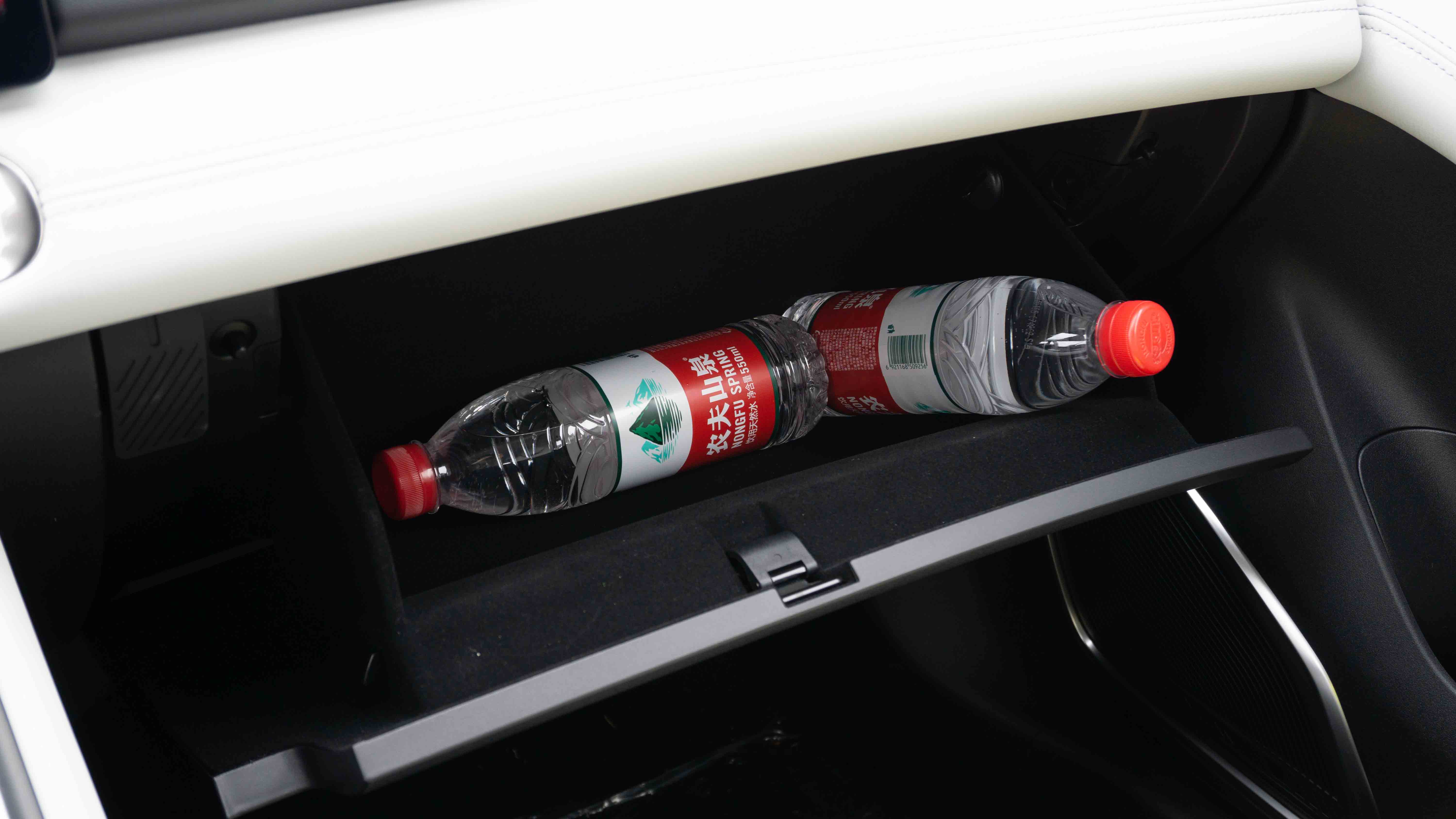
In terms of the front row, the Hycan A06 provides a very rich storage space and charging positions. Since the target audience is young users, this is indeed a clever move. The infotainment system has also made great improvements compared to previous models, and both fluency and functionality are on par with current mainstream brands.
Space: Performance Seats for Boarding
Nowadays, more and more manufacturers are switching to one-piece bucket seats for the front row of vehicles that focus on the young market. However, from my current experience, the bucket seats at the same price point are all focused on comfort, with wrapping and comfortable fillings.

When it comes to the front row of the Hycan A06, I originally thought it would also feature comfortable fabric seats. However, I was surprised to find that these sport seats are as hard as they appear, with firm filling and a hard leather surface that can provide great support. The riding experience is similar to that of early imported German sports cars. As for myself, with a height of 175cm and weight of 68kg, the double-wing protection on both sides of the seat can just hold my body, and my body won’t slide when making sharp turns.
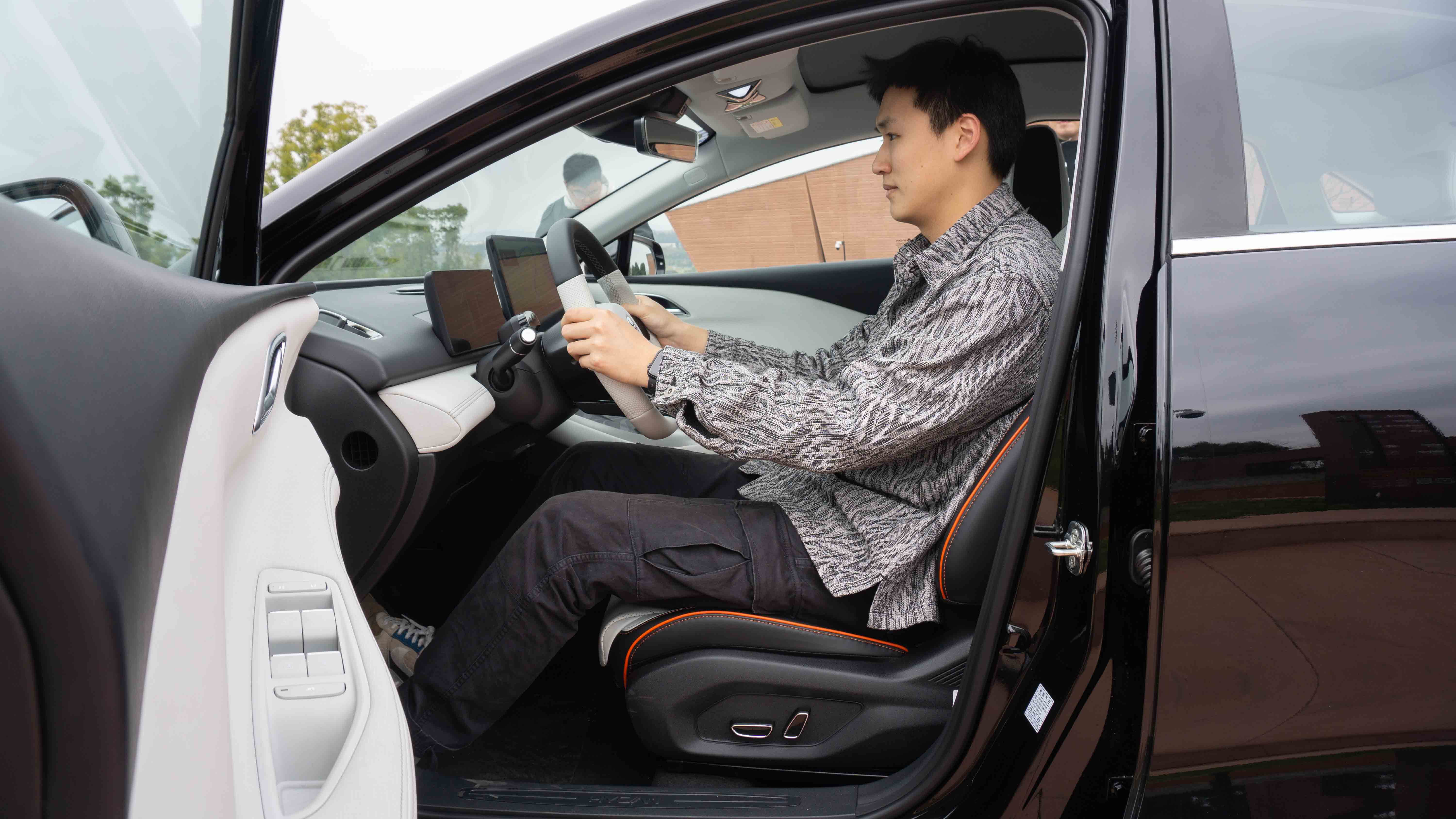
The front seat of the Hycan A06 is 56 cm long and the height can be adjusted from 28 to 33 cm. It is a pity that this seat only supports six electric adjustments (seat height, front and back, backrest angle), and because the seat cushion angle cannot be adjusted, the 56cm cushion length cannot provide complete thigh support.
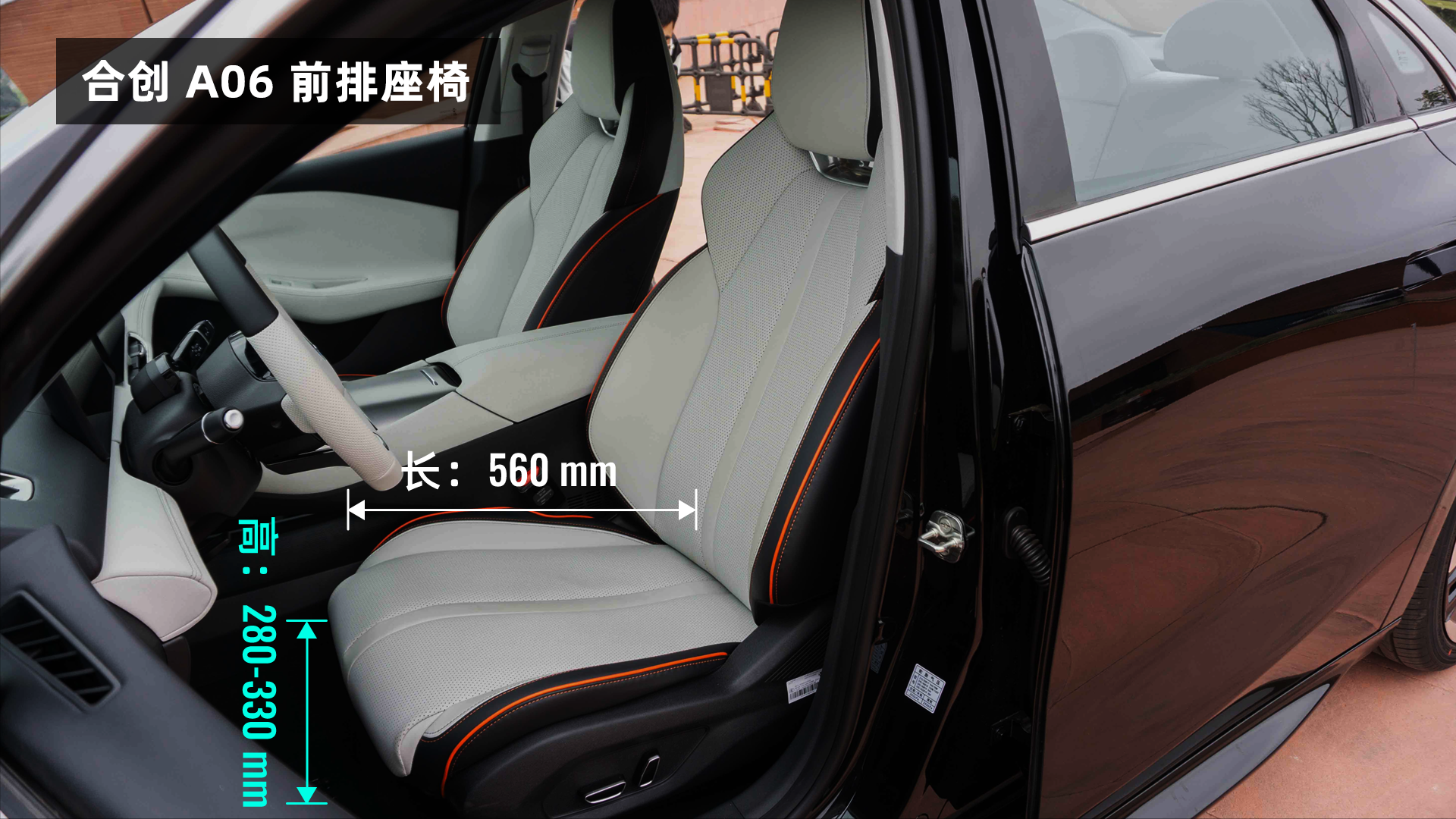
Moving on to the back row, when I sat in my suitable driving position, the legroom in the back row was two fists long, and the headroom was one fist long, so the space was not cramped.
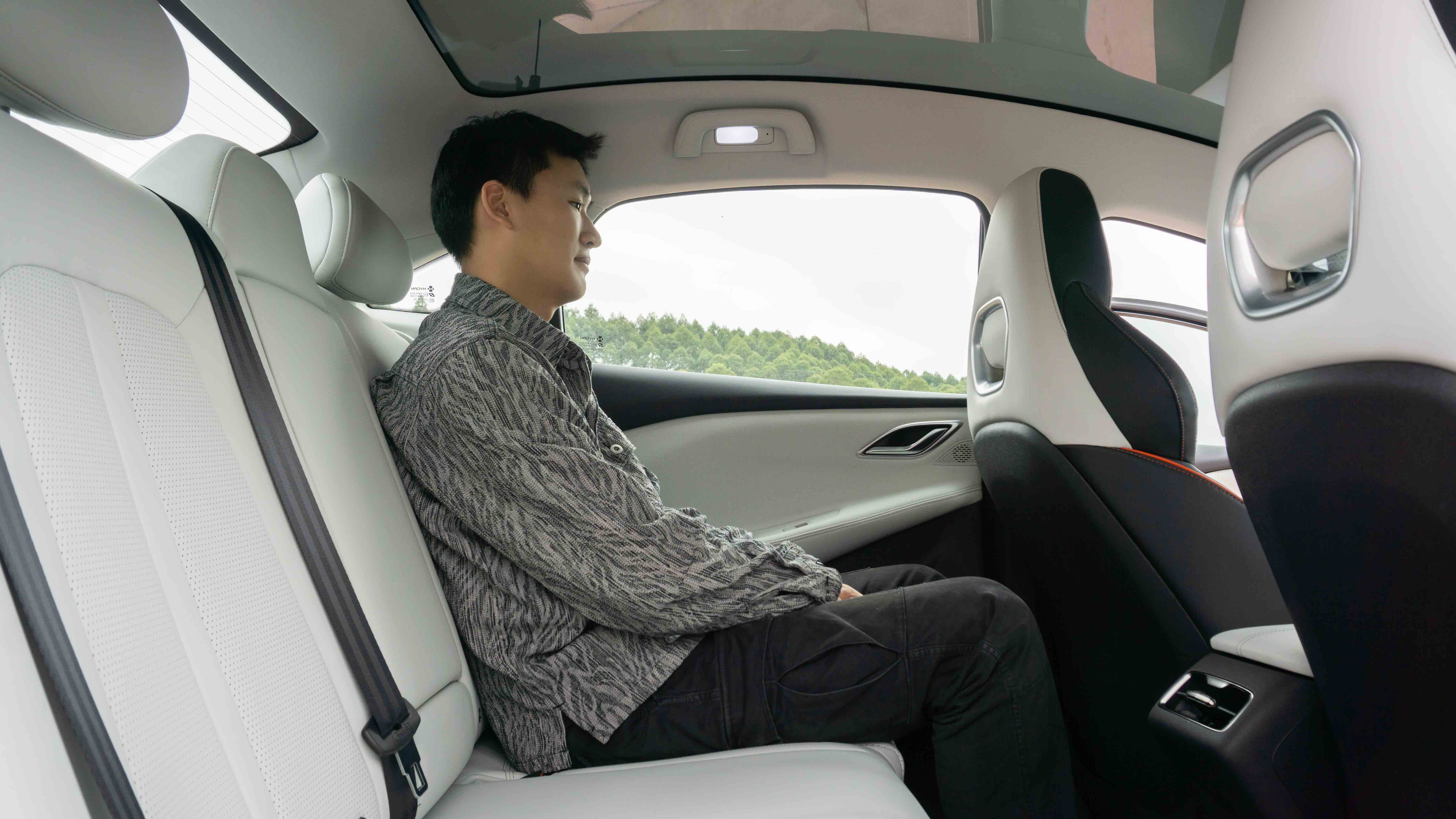
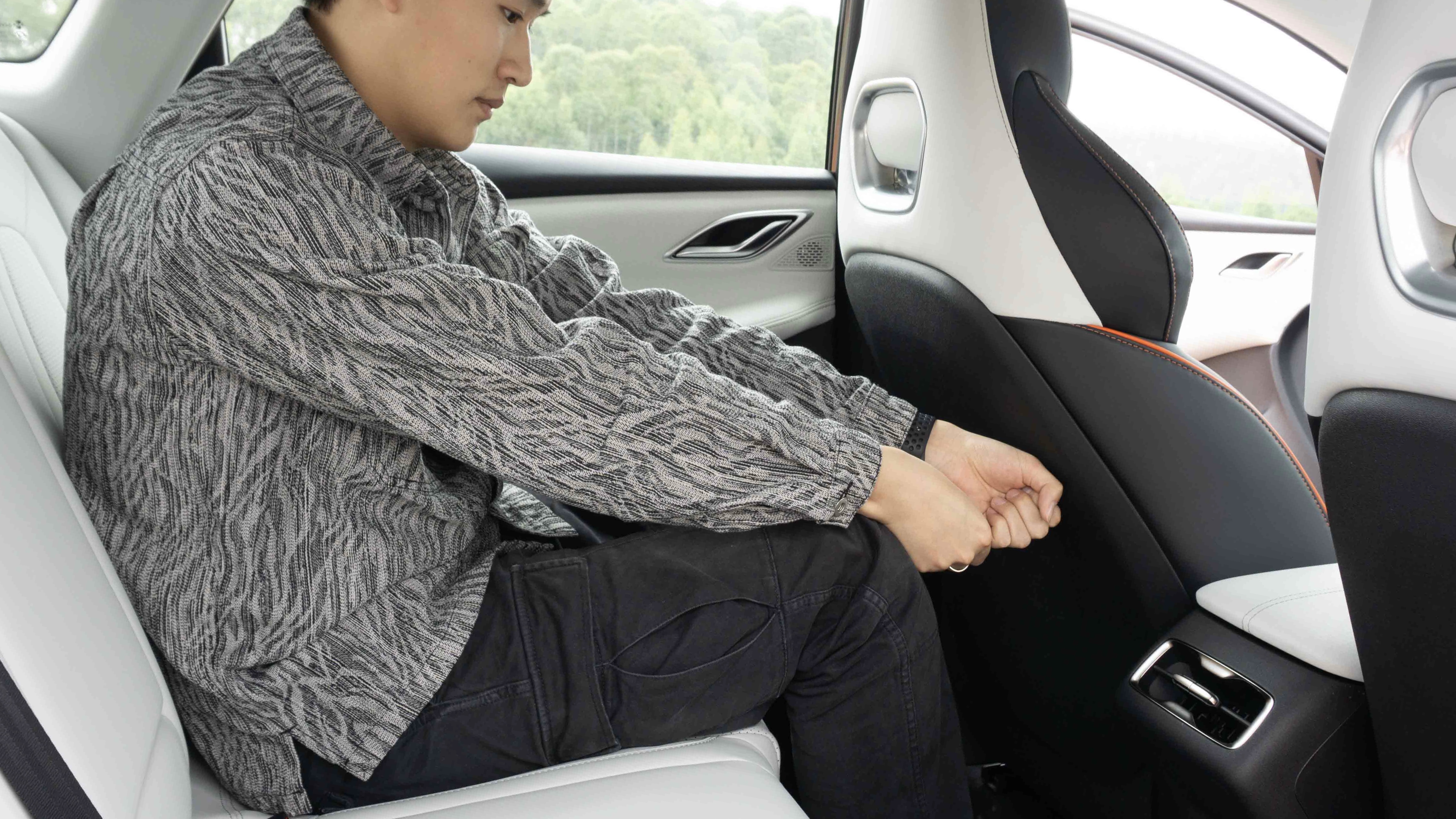
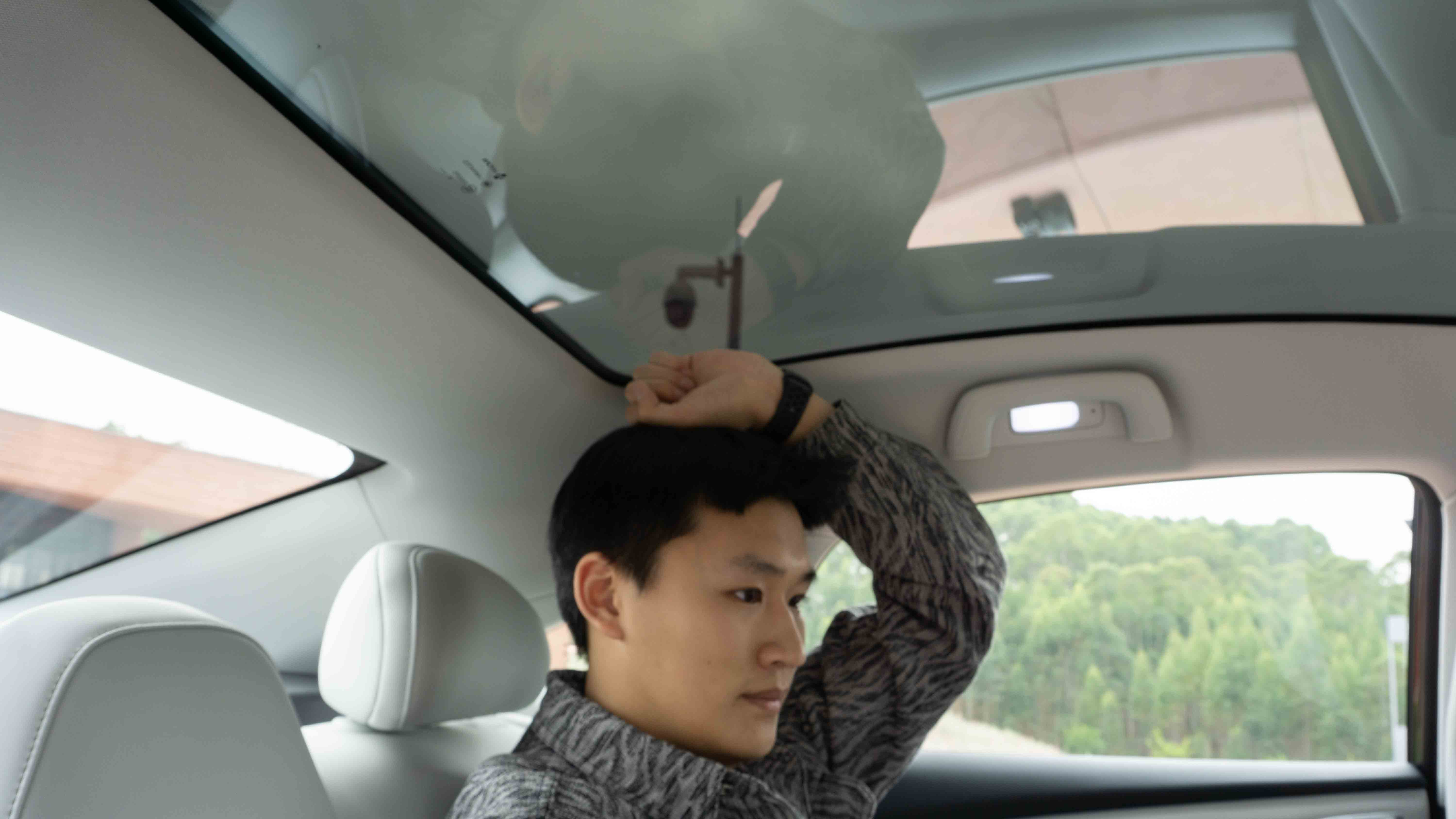
The length of the rear seat is 52 cm and the seat height is 35 cm. The backrest angle is moderate, without an obvious feeling of being straight and steep like a bench. The seat cushion filler is also relatively hard, with a significant difference in riding comfort compared to Changan Shenlan SL03 and BYD Dolphin, but fortunately, there is no obvious fatigue feeling even after sitting continuously for 4 hours.
Moreover, the feet of the second row passengers can be extended into the bottom of the front seat without being blocked by the front seat, so the overall sitting posture is relatively natural.
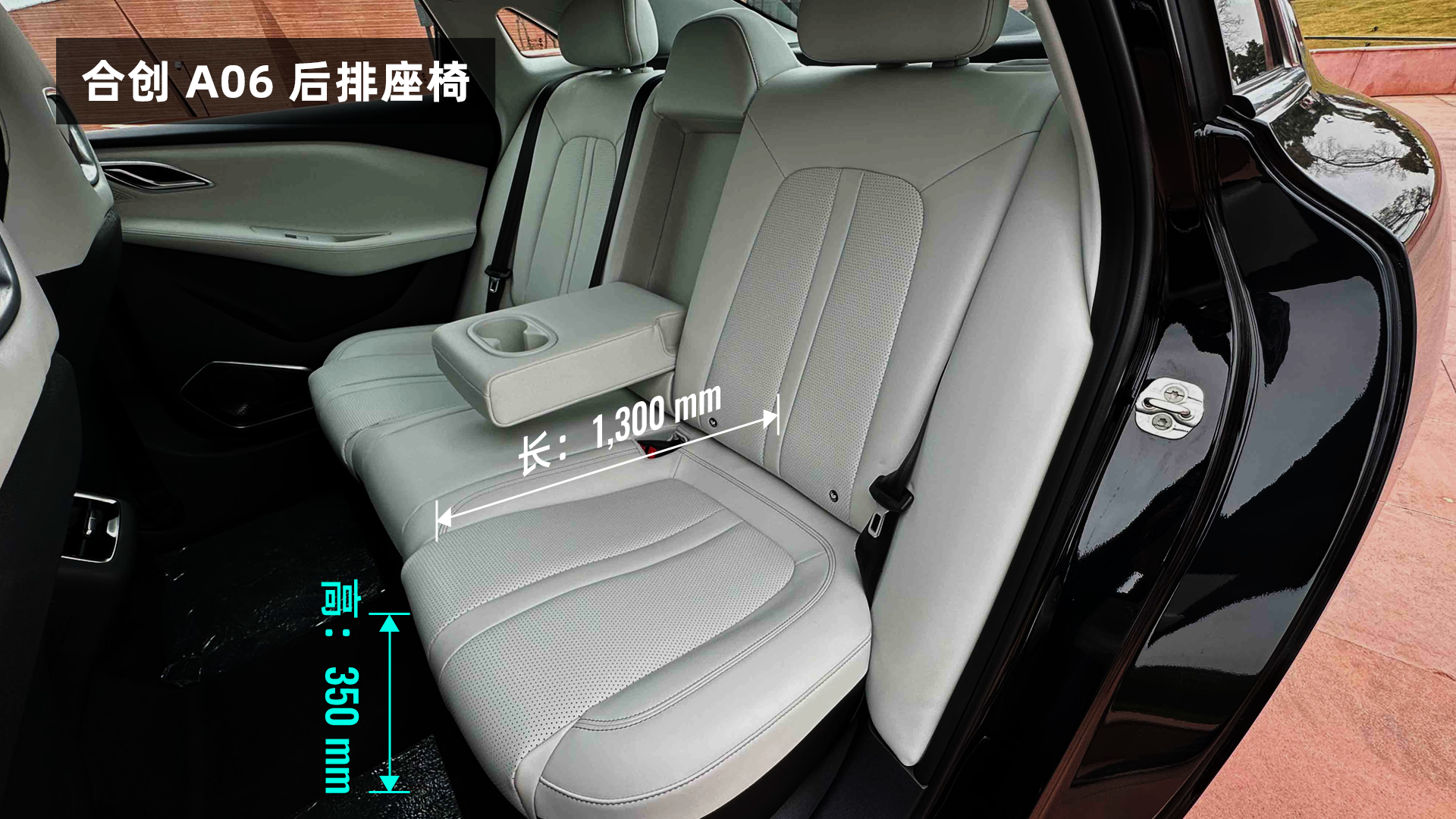
Thanks to the 1,920mm width of the car, the rear seat length of the Hozon Auto A06 reaches 130 cm, which is a relatively excellent seat width in the same level, plus the middle floor is basically in a pure flat state. It is not too crowded to accommodate three people. In terms of rear seat configuration, it is equipped with an air outlet, a USB charging port, and two microphone zones, which can meet daily use experience. Even the foot outlet on the rear floor will not affect the overall experience.
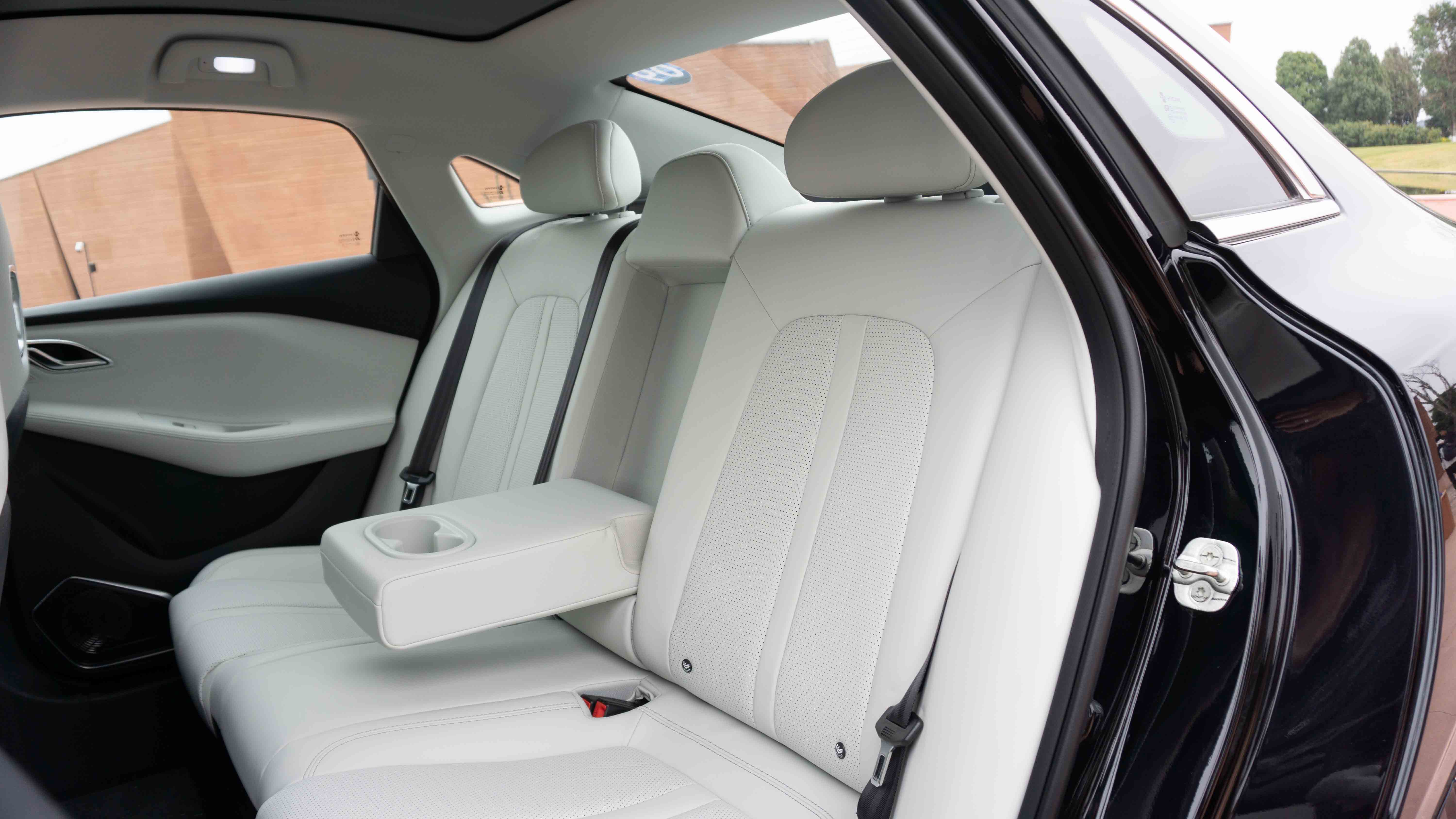
Although the Hozon Auto A06 is not as good as its competitors C01 and SL03 in terms of wheelbase and “room rate”, its actual riding experience is not inferior to its competitors in the same price range. As a B-class pure electric sedan that focuses on younger consumers, it takes into account the needs of rear passengers while meeting the needs of front passengers. From an experience point of view, the riding space of Hozon Auto A06 meets the level of a 200,000 RMB B-class electric sedan.
Driving: lack of power, chassis makes up for it
Most of the current B-class pure electric vehicles in the market claim to be sports-oriented, but they are still biased towards comfort-oriented riding experience in actual driving. Therefore, I didn’t take Hozon Auto A06 seriously, which also promotes racing and sports slogans, until I drove this car. I didn’t expect that in the era of comfort-oriented tuning, Hozon Auto A06 was quite sporty and formed a strong contrast with its round appearance.“`
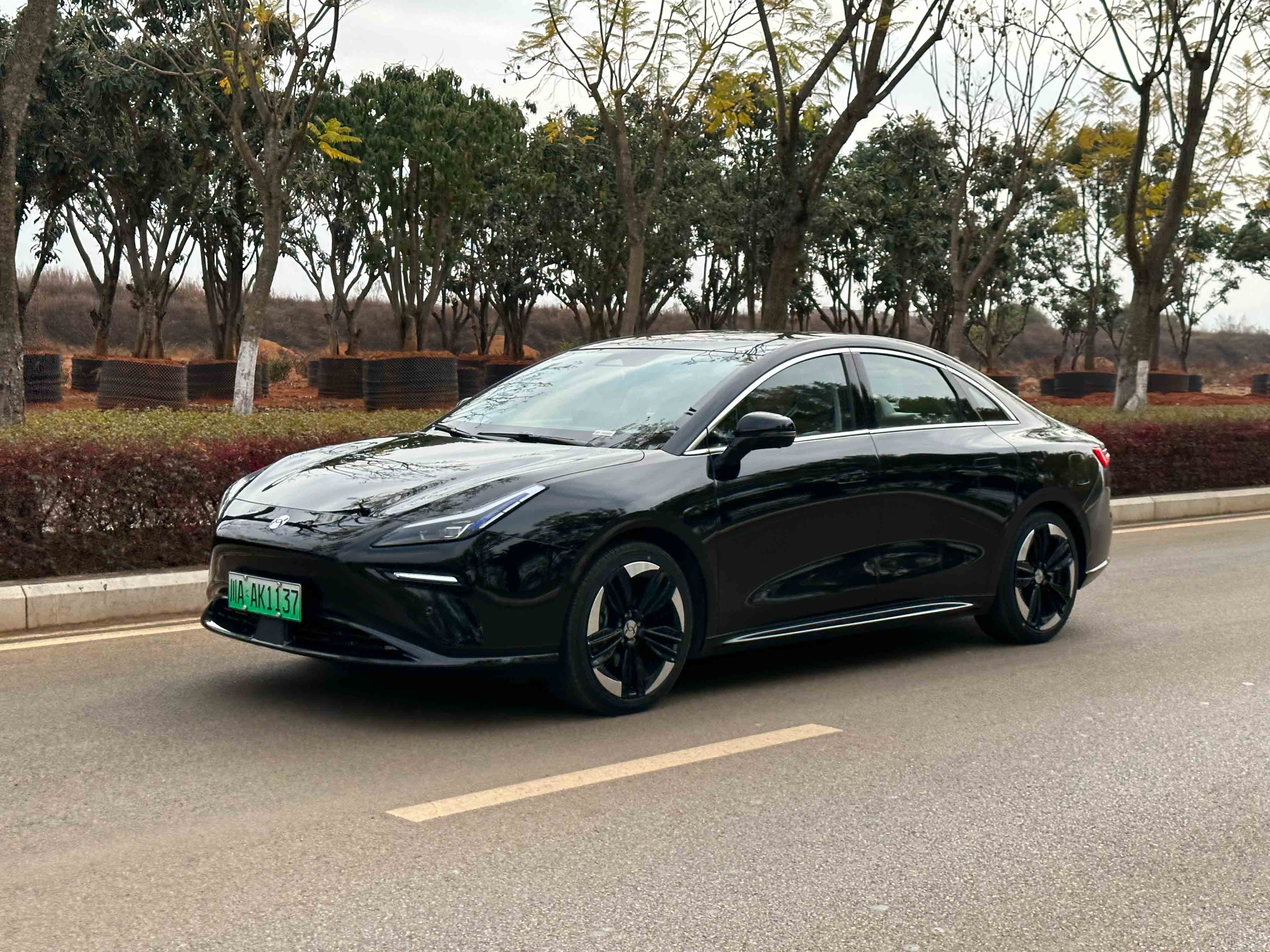
The suspension of the Hozon Auto A06 is a front MacPherson independent suspension and a rear five-link independent suspension. The hardware meets the mainstream level of the same level, but the overall filtering and shock-absorbing style is obviously rough.

On paved roads, the hard chassis of Hozon Auto A06 brings a very crisp filtering and shock-absorbing performance. The transmission of high-frequency vibrations on the road is more obvious, especially when passing over speed bumps on bridges, rough asphalt roads and Belgian roads. The transmission of road feelings is a bit excessive. When driving through large ditches or bumps at low speeds, for harder suspension systems, the bouncing of the entire vehicle is within expectation, and it will be better than many sporty models.
However, the dynamic and overall sense of harder suspension has significantly better performance, and even on sparsely bumpy roads, the vehicle will not feel disorderly. The stability and center-of-gravity transfer during high-speed lane-changing also gain more confidence.

The steering feel during dynamic driving of the Hozon Auto A06 is moderate, and the steering damping has three adjustable gears. The force of the comfort mode is just right, and it is light for low speeds, which is convenient for maneuvering. It is slightly heavy for high speeds, which is convenient for control. However, there is a slightly electronic-assisted taste in the return torque.
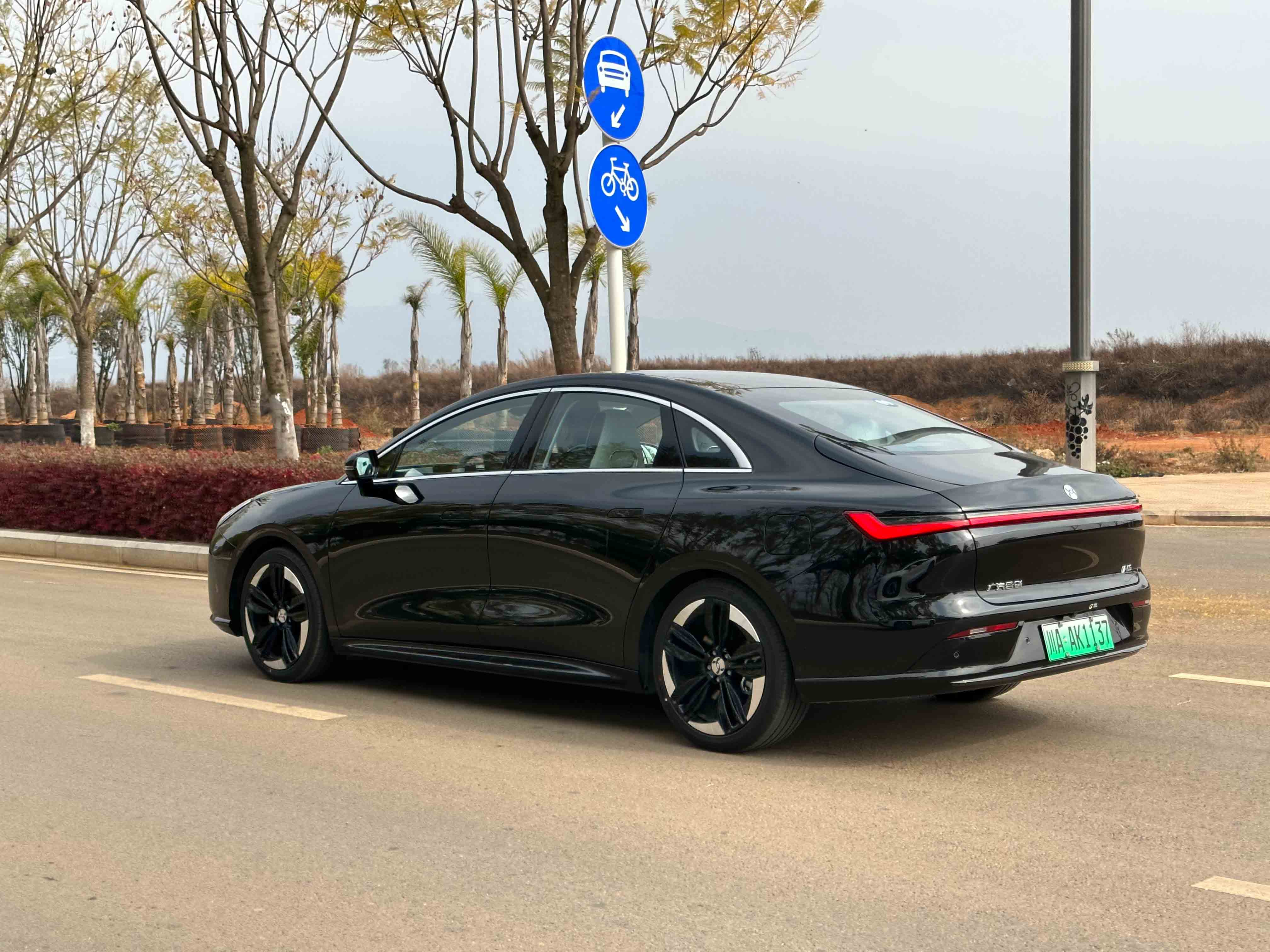
The Hozon Auto A06 630C uses a front motor with a maximum power of 160kW and a maximum torque of 225 N·m. This power is not outstanding compared to the same level, especially the 225 N·m torque, which will be weaker in acceleration performance. Full-throttle acceleration in the low-speed range still has a good sense of push, but at full acceleration after 100 km/h, the tactile sensation will be weakened, and it will be a bit powerless to want to increase the pace.

“`The throttle tuning of the HECHANG A06 is soft with a longer pedal travel. The benefit is more precise control over acceleration, especially when in single-pedal driving mode, enabling more accurate control over the vehicle’s acceleration and deceleration. Additionally, the HECHANG A06 is better suited for city driving due to its agile initial response and weaker power output later on. It was reported that the tuning of the HECHANG A06 was completed solely by the team at HECHANG and not in collaboration with GAC. In the short-term, the level achieved is worthy of recognition, but we look forward to a faster growth rate in the future.
Energy Consumption: Aerodynamic Resistance and Weight are Advantages
During the entire test drive, I deliberately observed the energy consumption performance of the HECHANG A06. The 630C version we drove was equipped with a 71.4 kWh battery pack, using CATL’s 523-square-shaped ternary lithium-ion battery with a charging rate of 1.25 C, a maximum charging power of 100 kW, and an official CLTC range of 630 km, consistent with the version name.
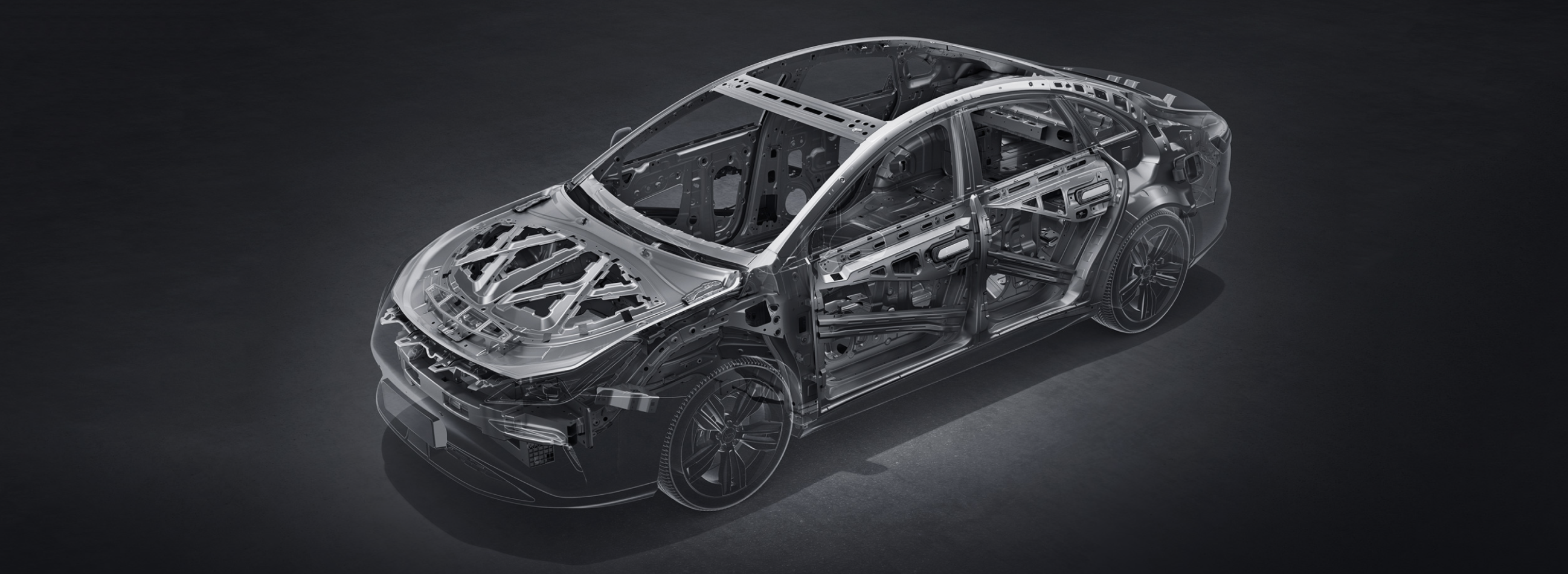
After reviewing the vehicle information, let’s examine the conditions of the test drive. The temperature on the day of the test drive was 16-17°C, and the driving location was a highway in Yunnan with complex altitude changes and continuous long uphill and downhill sections.
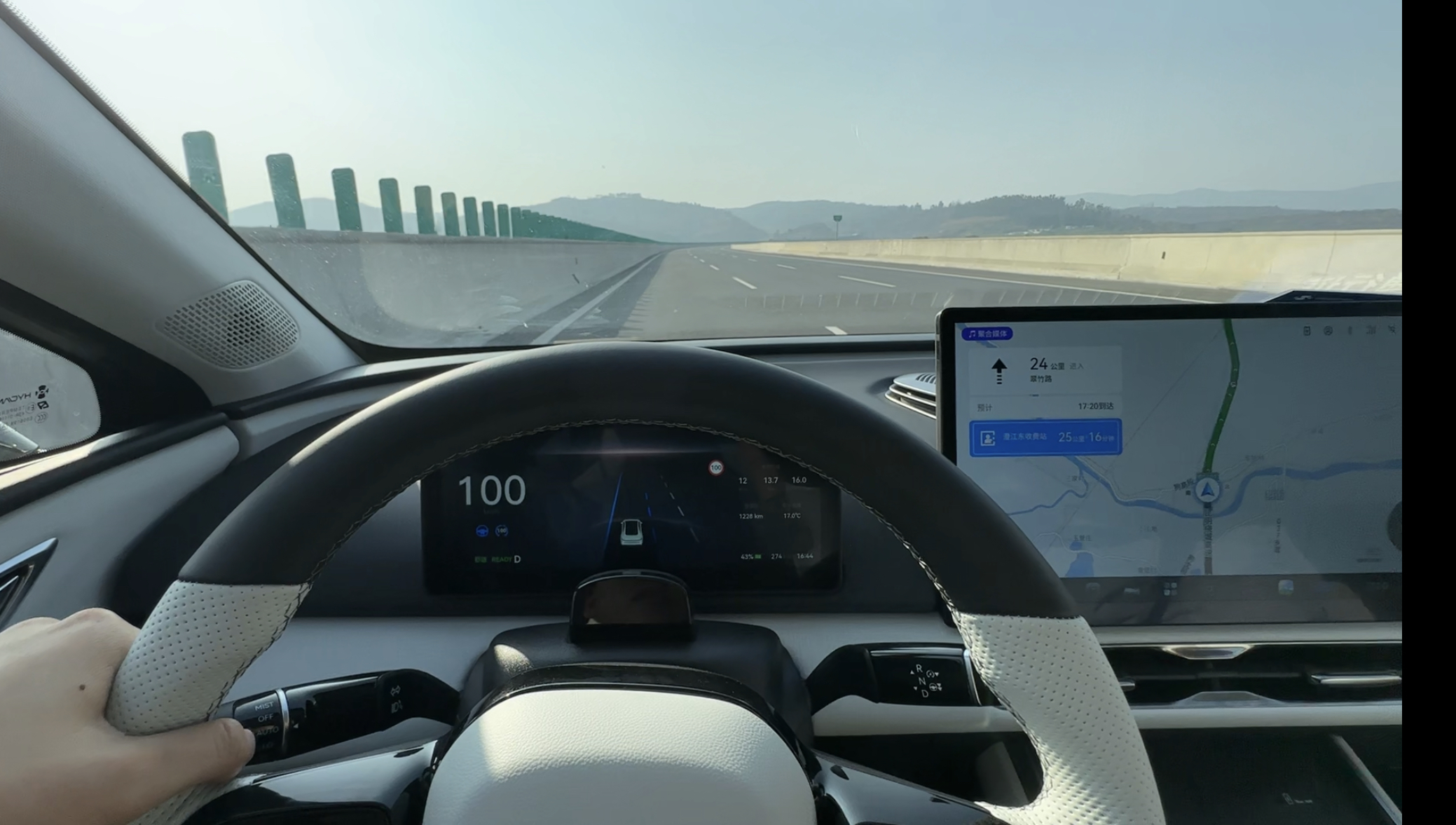
We drove at a speed of 120 km/h, with air conditioning set to 22°C and four passengers on board. Under these conditions, the displayed energy consumption was 20.4 kWh/100 km. This result may seem ordinary for a single motor with a power output of 160 kW, but considering the comprehensive full load and continuous altitude changes, it is not too bad.
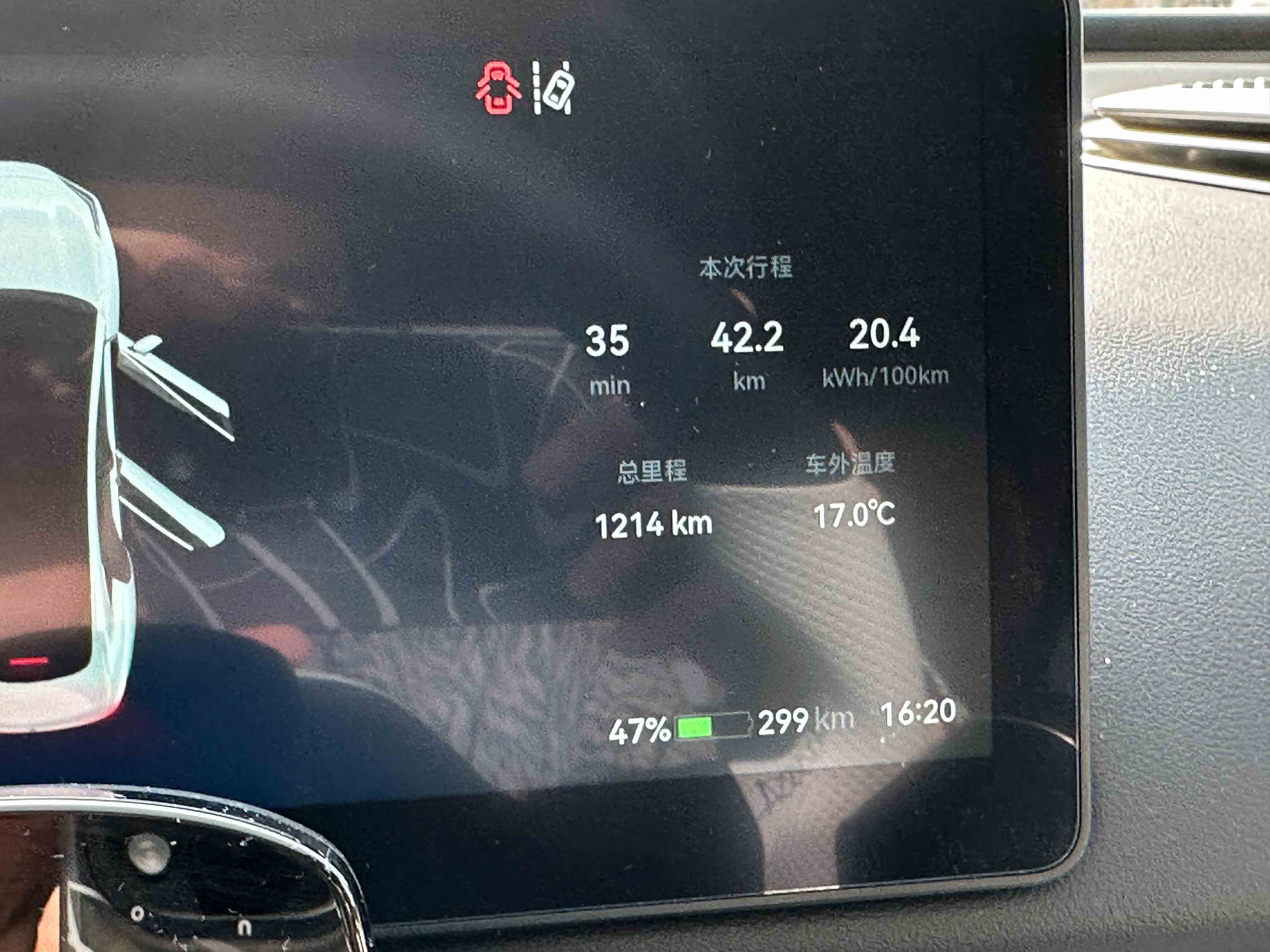
In mixed urban road conditions and under the same conditions, the displayed range of the HECHANG A06 is 16.7 kWh/100 km. If the car is driven alone in flat areas, energy consumption can be significantly lower. Two factors primarily contribute to this energy consumption performance: the light overall vehicle weight of 1,690 kg and an aerodynamic resistance coefficient of 0.217.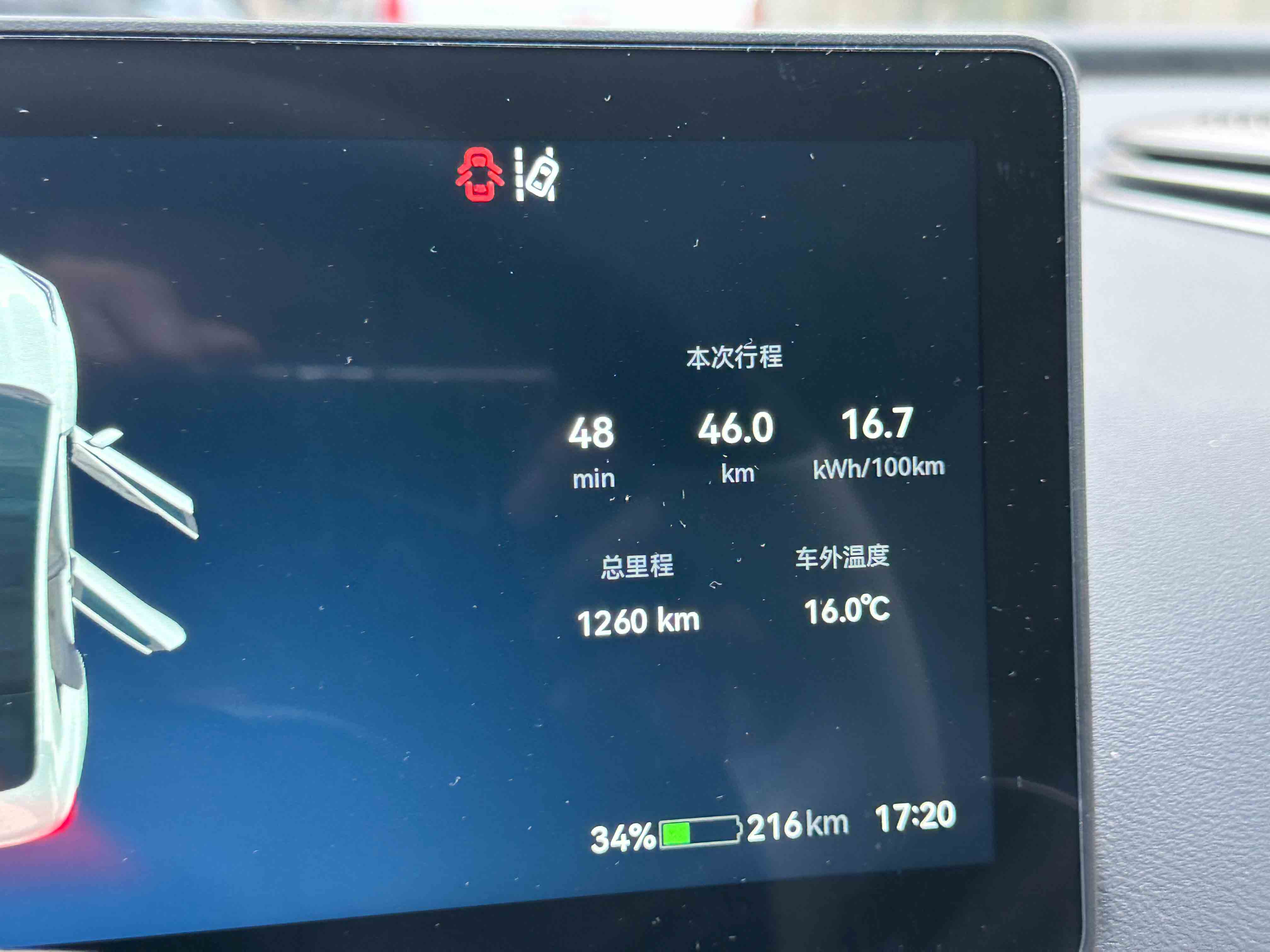
Another advantage of low air resistance is better aerodynamic coefficient. The noise reduction processing of HYCAN A06 is quite good under urban conditions (below 100 km/h). The main source of noise comes from tires. To be honest, the standard Giti Control P10 tires are slightly lacking in terms of noise and handling performance. If you want a better driving experience, you can replace them with other brands later.
ADAS: Capabilities Exist, but Experience Needs Improvement
HYCAN A06 comes standard with basic ADAS, including adaptive cruise control, lane-centering control, and intelligent adaptive cruise control. The 630C version we test drove also comes with blind spot monitoring, rear cross-traffic alert, lane change assist, and stay-away-from-large-trucks function. The hardware includes 5 millimeter-wave radars, 1 monocular visual camera, and 8 ultrasonic radars, and the ADAS supplier is Shanghai IMa Automotive Technology Co., Ltd.
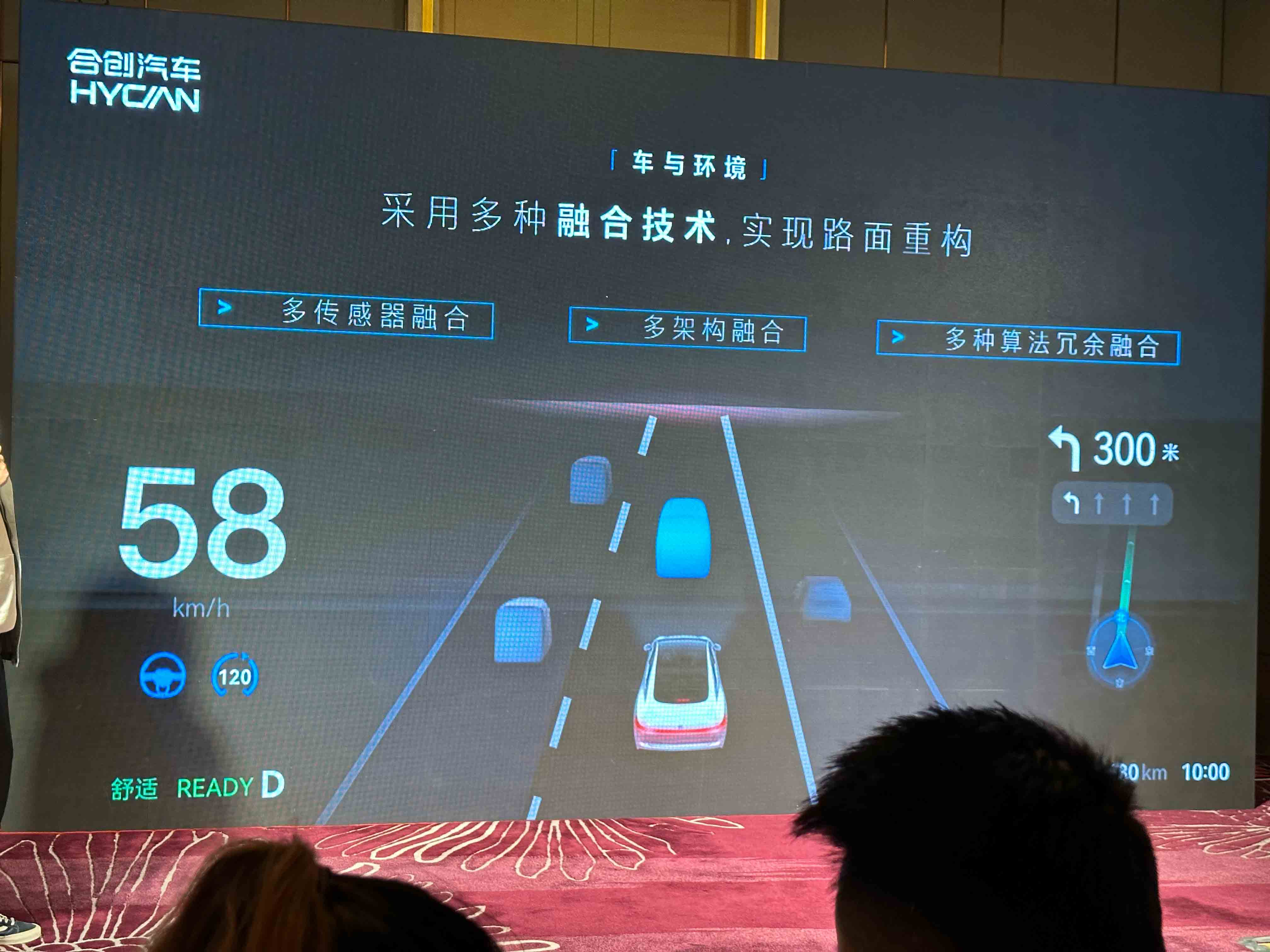
The ADAS hardware is average, and the supplier is not a very well-known large factory. However, in actual experience, HYCAN A06 feels surprisingly stable when used on closed sections with low traffic volume. When it comes to ACC longitudinal control, acceleration and deceleration are gentle, and even when faced with a stationary front vehicle at a speed of 60 km/h, it can come to a steady stop, with timing and deceleration rate meeting expectations. After stopping, passengers in the car even asked me, “Did the car park itself?” Obviously, the smoothness and comfort have been recognized. At the same time, the ADAS interface of A06 is also relatively rich, capable of identifying and distinguishing between cones, pedestrians, sidewalks, bicycles, large vehicles, etc.
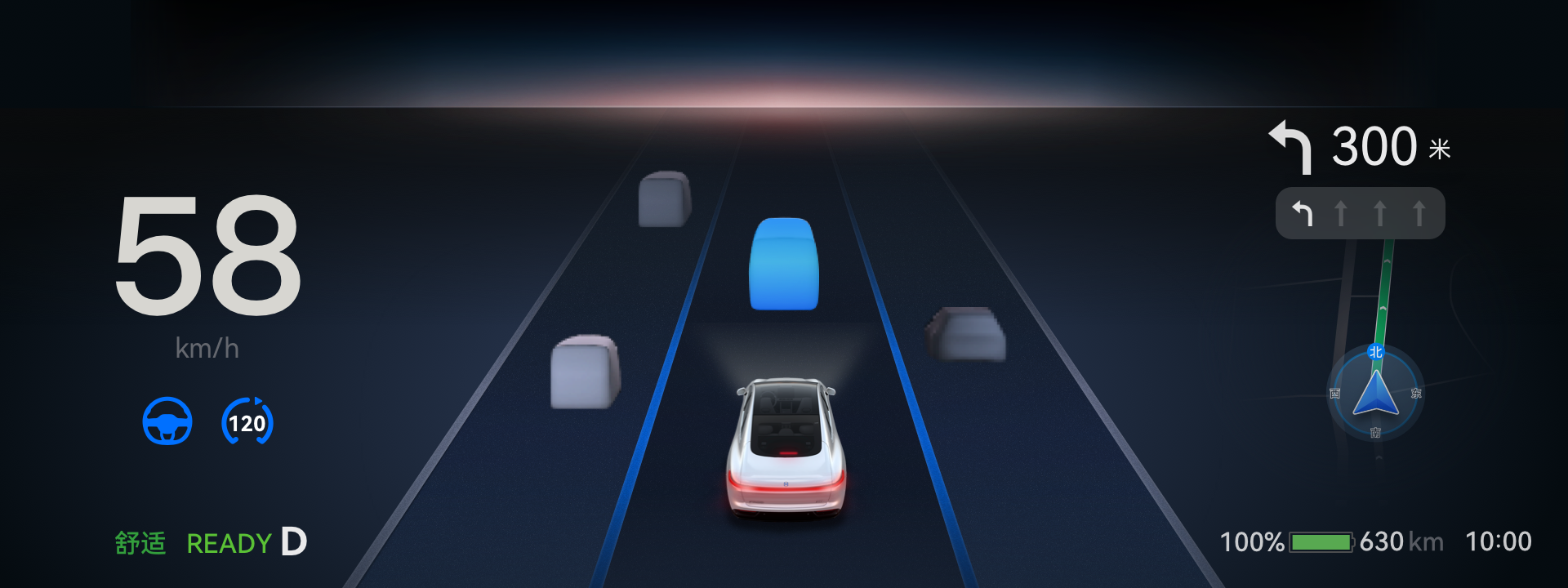
In terms of lateral control, there was no sense of shaking or instability in A06’s feel. However, the vehicle’s steering wheel is always adjusted to the left and right to ensure that the vehicle is always driving in the middle of the lane. This can create a feeling of insufficient confidence, even if you know that the vehicle is in a stable state. It is hoped that HYCAN can solve this problem in the next OTA version.
In addition to basic assisted driving, the Hechuang A06 also has a lane change function. After the turn signal lever is activated, the vehicle will immediately execute the lane change action when the speed is above 65 km/h. Even at 100 km/h, the steering action is very smooth, and the distance for changing lanes at this speed is around 100 km each time.
In the future, the Hechuang A06 will also launch the SPA remote parking function through OTA. This is a fusion scheme of 4 parking cameras and 8 millimeter-wave radars, which is much more reliable than pure ultrasound “touching” parking. Hechuang’s next model, the V09, will also add a 128-line lidar on the H-VIP platform of the A06 model to further expand the intelligent driving capabilities.
Conclusion
If your budget is only 200,000 yuan and you want to buy a well-balanced B-class pure electric vehicle, the market doesn’t offer many options. The long-range Deep Blue SL03, BYD Dolphin, and Leapmotor C01 are all priced around 230,000 yuan. Except for the ubiquitous ride-hailing cars, you can only buy small-sized products like the XPeng P5 and ID.3 that are positioned in the A-class.
In this price range, the Hechuang A06, priced at 199,800 yuan, can provide a relatively long driving range, a medium-sized car space, a youthful interior style, and basic assisted driving functions. However, the hard chassis and seats, and weak power become the compromise points.
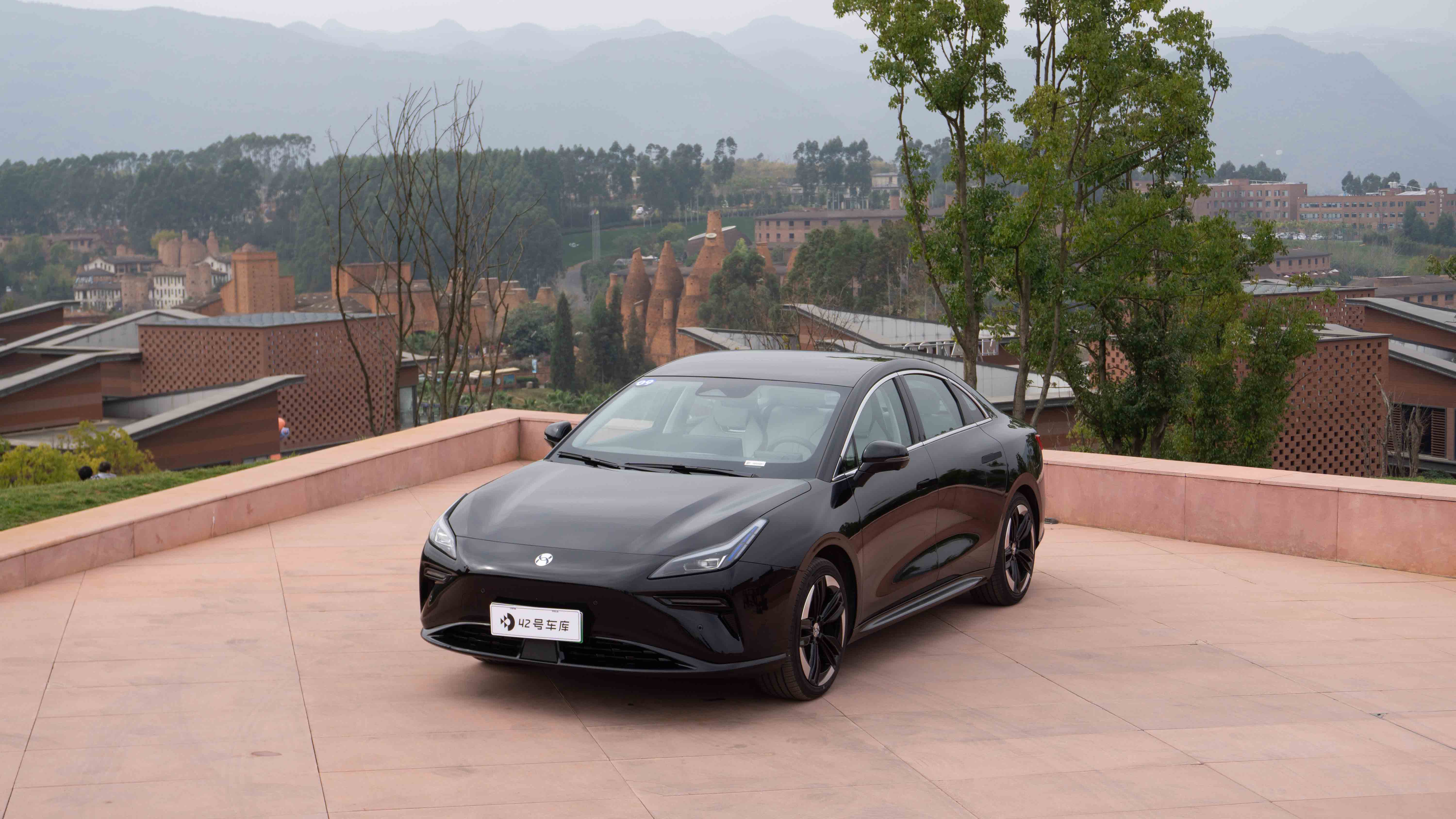
For Hechuang, the gross profit of A06 has been compressed to the extreme. Facing a more rational consumer group today, it needs to use price wars to grab the market gap. Since the development of China’s automobile industry, B-class cars have always been a hot market, and Hechuang A06 wants to win a place in this market, not only relying on products, but also a series of actions such as after-sales and marketing. However, the influx of fresh blood into the market also allows forWe are looking forward to the feedback from the market.
This article is a translation by ChatGPT of a Chinese report from 42HOW. If you have any questions about it, please email bd@42how.com.
